BOOMI HEAD OF META
COMMVAULT
REGIONAL VICE PRESIDENT
MICROSOFT EXECUTIVE DIRECTOR

MARK MOFFAT, CEO AT IFS, TELLS CNME HOW THE COMPANY IS ON A MISSION TO DOMINATE THE FUNCTIONAL DOMAIN OF ASSET AND SERVICE MANAGEMENT.
ISSUE 382 I MAY 2024 TAHAWULTECH.COM PUBLICATION LICENSED BY DUBAI PRODUCTION CITY, DCCA
READY TO DOMINATE


E-mail: mark.forker@ cpimediagroup.com
TIME TO CONNECT
On the front cover of May’s edition of CNME is a fantastic interview with Mark Moffat, CEO of IFS, which is the fasting growing cloud enterprise software company in the world.
Moffat was appointed CEO in January of this year, and in a fascinating conversation he candidly articulated his vision for IFS.
It became evident throughout our exchange that his mission is for IFS to dominate the functional domain of asset and service management under his tutelage.
“My long-term aspirations and ambitions for IFS is for us to dominate asset and service. I want the IFS brand to be synonymous with asset management and service management functional domains in the same way you could argue that Workday is for HDM, SAP and Oracle are for finance, and Salesforce is for CRM. That’s where we are going, and we want to dominate that functional domain,”
It is an excellent in-depth interview, and we also cover topics such as sustainability, AI, and the forthcoming IFS Connect Series taking place in Riyadh on May 6th.
You can check out the full 8-page interview on pages 26-33.
In this month’s magazine, we also caught up with our old friends from Avaya.
Avaya have been reborn as a company under the direction of their CEO Alan Masarek.
We spoke to Ahmad Dorra, CX Solutions Lead – Middle East, Turkey & Africa at Avaya to learn how they are leveraging the capabilities of Gen AI to enhance their CX offering.
In addition to this, he also outlined their vision for the KSA, and believes that the suite of services and solutions being provided by Avaya, makes them the perfect fit for the digital transformation programs sweeping across the region.
That interview is on pages 10-13.
CNME were present at GISEC 2024, which was held at Dubai World Trade Centre from April 23-25th.
We conducted a series of excellent interviews with some of the leading lights in the cybersecurity ecosystem.
One of them is OPSWAT, who have established themselves as a leader when it comes to protecting critical infrastructure.
We spoke to Rami Nehme from OPSWAT onsite at GISEC to learn more about their new partnership agreement with CPX, which he believes will be a gamechanger for the security industry.
That interview is on pages 18-19
Staying on the topic of cybersecurity, we spoke to Kevin Ripa, Senior Instructor at SANS Institute. It is well documented that the biggest challenge in cybersecurity is the skills gap, but through their training programs SANS Institute are trying to fill the void.
Ripa also said that IT security teams need to stop blaming computer users, and said for far too long end-users have been used as scapegoats.
It’s a great interview and you can check it out on pages 20-23.
We also had brilliant interviews with Microsoft and Commvault at GISEC 2024.
Microsoft’s Tariq Halawani outlined how its Security Copilot can really equip cybersecurity professionals with the tools they need to tackle the threats emerging within the cybersecurity domain.
Fady Richmany is a veteran of the IT industry across the Middle East, and he reiterated the needs for businesses to become cyber resilient.
He believes their platform can provide enterprises with the cyber resiliency they need to better protect their data and assets from cyberattacks.
In addition to this, we have some brilliant thought leadership articles from Dataiku, Endava and Epicor.
This month, CNME and tahawultech.com are hosting our GovTech Awards on May 22nd. We will have full coverage of that event in June’s edition of CNME.
See you then!
Mark Forker
Editor
to us: Our events Our online platforms tahawultech.com Our social media facebook.com/tahawultech twitter.com/tahawultech linkedin.com/in/tahawultech My long-term aspirations and ambitions for IFS is for us to dominate asset and service.” EDITORIAL
Talk

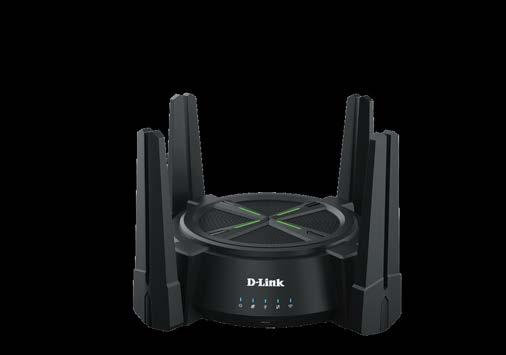
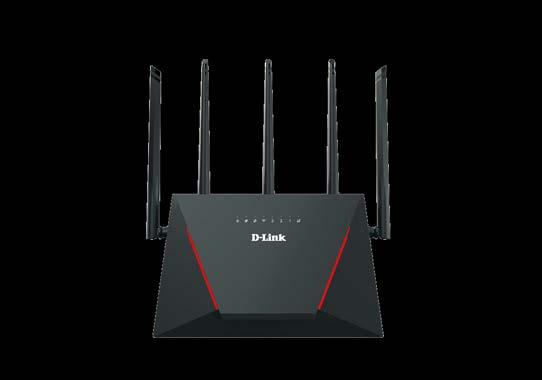







CNME rounds up the biggest regional and global developments in enterprise technology, which includes the news that Group-IB and National Security Services Group have joined forces to bolster cybersecurity across the Middle East, Veeam completes the acquisition of Covewareand AVEVA launches industrial intelligence platform CONNECT.
10
Ahmad Dorra, CX Solutions LeadMiddle East, Turkey & Africa at Avaya, outlines how they are leveraging Gen AI to enhance their CX offering.
14
Ahmed El Hamouly, Head of META at Boomi, highlights how its agnostic cloud-native platform is built to scale, which enables users to achieve the business outcomes they want.
20
Kevin Ripa, Senior Instructor at SANS Institute, says it's time for IT security teams to stop blaming endusers for their cybersecurity woes.
38 Tariq Halawani, Executive Director of Enterprise Solutions at Microsoft UAE, explains how the company is committed to helping their customers and partners use AI responsibly.
Fady Richmany, Regional Vice President - Emerging Markets at Commvault, preaches the importance of cyber resilience amidst a backdrop of a constantly evolving threat landscape.
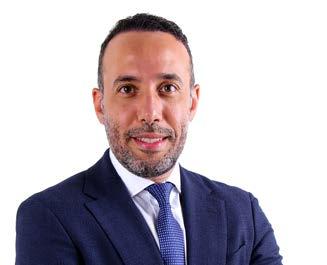

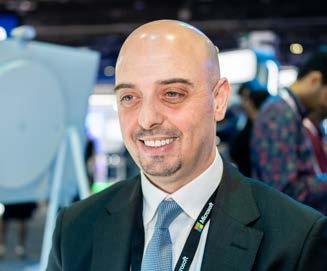

46
ADVERTISING Group Publishing Director Kausar Syed kausar.syed@cpimediagroup.com Publishing Director Natasha Pendleton natasha.pendleton@cpimediagroup.com Sales Director Sabita Miranda sabita.miranda@cpimediagroup.com EDITORIAL Editor Mark Forker mark.forker@cpimediagroup.com OnlineEditor Daniel Shepherd daniel.shepherd@cpimediagroup.com Contributing Editor SAME & Tahawultech.com Veronica Martin PRODUCTION AND DESIGN Designer Ulysses Galgo ulysses.galgo@cpimediagroup.com DIGITAL SERVICES Web Developer Adarsh Snehajan webmaster@cpimediagroup.com Publication licensed by Dubai Production City, DCCA PO Box 13700 Dubai, UAE Tel: +971 4 5682993 © Copyright 2024 CPI All rights reserved While the publishers have made every effort to ensure the accuracy of all information in this magazine, they will not be held responsible for any errors therein. Published by COMMVAULT AVAYA SANS INSTITUTE BOOMI MICROSOFT 38 46 10 20 14 FOUNDER, CPI Dominic De Sousa (1959-2015) CONTENTS 6 News
26 IFSCover Feature
Extreme Introduces Hub for Research, Development and Innovation in Networking
Extreme Networks, Inc., a leader in cloud networking, recently announced the launch of Extreme Labs: a dynamic ecosystem where creativity, collaboration and cutting-edge technology converge to fuel innovation of early-stage technologies.
Extreme Labs is a premier venue for the company to showcase technology innovation as it becomes closer to commercial availability. Extreme Labs drives the prioritization of technology development with wide impact, as demonstrated by the work the company is doing with Living Tomorrow to jointly promote and design innovative products that are likely to become widely adopted by the year 2030.
"At our core, we fuel innovation. With Extreme Labs, we're not just pushing boundaries; we're rewriting them and redefining norms. We embody the ethos of simplifying networking and challenging conventions. Extreme AI Expert is just another example of how we create best-in-class technology that empowers customers to drive impactful outcomes. Collaborating with customers and partners throughout the innovation cycle gives them a voice and sets a bar of excellence, especially as we fully immerse ourselves in an era of AI, networking and security convergence", said Nabil Bukhari, Chief Product and Technology Officer at Extreme Networks.

Cisco study reveals 91% of UAE companies use AI in their cybersecurity strategies
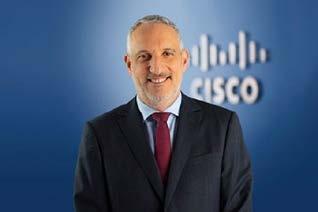
Managing Director for Cybersecurity at Cisco in the Middle East and Africa.
The recent study conducted by Cisco highlights a significant surge in the use of AI technologies in cybersecurity strategies among UAE organizations. The study indicates that 91% of companies surveyed are integrating AI in their security defences, mainly in threat detection, response, and recovery.
The 2024 Cisco Cybersecurity Readiness Index was developed in an era defined by hyperconnectivity and
a rapidly evolving threat landscape. Despite continuing to be targeted with a variety of techniques that range from phishing and ransomware to supply chain and social engineering attacks, companies today are actively attempting to fortify their defence.
"As our digital landscape continues to evolve rapidly, the importance of proactive cybersecurity measures cannot be overstated", said Fady Younes, Managing Director for Cybersecurity at Cisco in the Middle East and Africa. "It is essential that organizations prioritize cybersecurity investments and embrace innovative solutions to effectively mitigate risks. By fostering a culture of cyber resilience, UAE organizations can navigate the digital landscape with confidence, while safeguarding their operations against emerging threats".
Trend Micro reaffirms its commitment to UAE cyber security vision at GISEC 2024
The report unveiled that Trend Micro has successfully thwarted and identified a staggering number of threats globally and within the UAE, highlighting the company’s commitment to the UAE’s cyber security vision to strengthen action against digital crime for the next 50 years.
The report titled "Calibrating Expansion" highlights that Trend Micro has played a pivotal role in safeguarding cybersecurity in the UAE, with its solutions blocking and detecting over 83 million threats. This includes the prevention of over 26 million email threats and more than 11 million malicious URL victim attacks. Furthermore, Trend Micro
identified and stopped more than 28 million malware attacks, showcasing its effectiveness in protecting digital infrastructure in the country.
"In today's interconnected world, cybersecurity has emerged as a key pillar for securing digital transformation, for businesses, communities and individuals", said Dr. Moataz Bin Ali, Regional Vice President and Managing Director, MMEA, Trend Micro. "We are delighted to participate at GISEC, as it serves as an ideal platform to elevate awareness of cybersecurity, positioning it as a driving force for shaping a bold new future. Through our participation, Trend Micro reaffirms its dedication to providing enterprises in the country with
6 NEWS www.tahawultech.com MAY 2024
Fady Younes,
Nabil Bukhari
Group-IB and National Security Services Group join forces to bolster cybersecurity in the Middle East

Group-IB, a leading creator of cybersecurity technologies to investigate, prevent, and fight digital crime announced recently that it has signed a Memorandum of Understanding (MOU) with National Security Services Group L.L.C (NSSG), a leading Cybersecurity firm and

innovative solutions, including our newly launched Trend Vision One™️ platform, marking a momentous milestone in transforming the cybersecurity landscape in the UAE and the region. We are committed to shaping a resilient digital landscape in the country, enabling organisations to navigate the complexities of cybersecurity with confidence".
Managed Security Services provider in Oman, to establish a framework where NSSG will offer Group-IB’s Threat Intelligence, Fraud Protection, Digital Risk Protection, Managed Extended Detection and Response (XDR), Business Email Protection, and External Attack Surface
Management solutions, as well as Digital Forensics and Incident Response (DFIR), High-Tech Crime Investigation, Auditing and Consulting, and Education and Training services to strengthen cybersecurity for its clients within the government, finance, oil and gas, and telecom industries.
“We strongly believe that today’s signing will enable us to combine our areas of expertise, experience, and technical innovation to provide more comprehensive products and services to our customers in the Middle East”, said Ashraf Koheil, Regional Sales Director – META of Group-IB. “NSSG shares the same vision and commitment that we have for regional cybersecurity, and we are excited to work closely to deliver the best protection against cyberthreats for our clients”.
Veeam launches most complete support for ransomware with acquisition of Coveware
Veeam® Software, the #1 leader by market share in Data Protection and Ransomware Recovery, recently announced the acquisition of Coveware, a leading provider in cyber-extortion incident response.
It brings best-in-class ransomware recovery and first responder capabilities to further strengthen Veeam’s radical resilience solutions for customers.
“It’s no longer a question of when your organisation is attacked, but how often. Seventy-six percent of organisations have been attacked over the past twelve months, and addressing that cyber threat is critical for every enterprise”, said Anand Eswaran, CEO at Veeam. “It’s critical to ensure

data is safe and protected, and when the worst happens businesses can recover quickly and safely. Coveware is already helping enterprises across the world improve their defence and if the worst happens, helping them recover. Combining those capabilities with Veeam’s #1 data protection and ransomware recovery solutions, which are used by over 450,000 customers, creates the most complete set of cyber resilience capabilities available from one source. Veeam now provides enterprise customers with proactive threat intelligence that helps identify any security gaps with forensic triage and decryption, all combined with the capabilities of the market leader”.
7 www.tahawultech.com MAY 2024
Dr. Moataz Bin Ali, Regional Vice President and Managing Director, MMEA, Trend Micro.
Anand Eswaran, CEO at Veeam.
AVEVA launches CONNECT, the world’s leading industrial
intelligence platform, at Hannover Messe
AVEVA, a global leader in industrial software, driving digital transformation and sustainability, has chosen Hannover Messe to unveil CONNECT, the world’s fastest growing industrial intelligence platform providing trusted and actionable insights to decision-makers in diverse sectors.
CONNECT empowers industrial leaders with a deeper understanding of their business and an intelligent digital twin that unifies insights across their industrial ecosystem to drive performance, optimize efficiency, and maximize sustainability for increased ROI. Built on the trusted software of AVEVA, CONNECT brings together applications from diverse other providers including Schneider Electric, RIB, ETAP, and other partners.
During the press conference held at Hannover Messe, Caspar Herzberg, CEO, AVEVA declared, “The connected industrial economy will unlock the benefits of global collaboration across the industrial ecosystem. As the world’s leading industrial intelligence platform, CONNECT empowers industrial teams with a holistic understanding of the value chain and sparks real-time innovation at every level. Enhanced with analytics and AI, this unique and complete data ecosystem provides unparalleled efficiency in one frictionless environment, where teams are empowered to engineer smarter, operate better and drive profitability".

Infopercept launches Invinsense 5.0A cybersecurity platform completely made in India
Infopercept, a global platform led security services company, announced the launch of Invinsense 5.0, the latest version of its SaaS-based cybersecurity platform.
This updated version integrates Security Lake, AI/ML modules, and Gen AI, enhancing cybersecurity operations for organisations worldwide.
Invinsense 5.0 encompasses offensive, defensive, and security compliance functionalities, consolidating advanced technologies into a unified management console for streamlined operations.
“Invinsense was conceived with scalability in mind, allowing seamless integration of new technologies across offensive, defensive, and compliance domains”, said, Jaydeep Ruparelia, CEO, and Co-founder of Infopercept Consulting Pvt Ltd. "With Invinsense 5.0, we have gone deeper into each cybersecurity domain. By leveraging AI/ML-enabled Security Lake, we aim
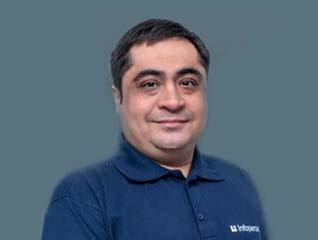
to streamline operations, minimize alerts, and significantly reduce security operation costs. Additionally, our expanded offensive security offerings empower organisations to fortify their external attack surface, ensuring readiness against sophisticated threats. Through numerous enhancements in Invinsense 5.0, including a unified dashboard experience, we enable organisations to achieve their two primary cybersecurity objectives: combating cyberattacks and adhering to security compliances”.
Google Cloud recognises Oredata as MENAT Region Partner of the Year
Oredata, a pioneering technology solutions provider, has been named the Google Cloud Services Partner of the Year in the Middle East, North Africa, and Turkey (MENAT) region for 2024.
This prestigious award, which the company has won for a second consecutive year, stands as validation of Oredata's outstanding achievements in providing comprehensive cloud services, driving innovation and collaboration, and empowering customers for success in the dynamic and rapidly evolving cloud computing landscape.
In presenting its Google Cloud
Services Partner of the Year 2024 award, Google commended Oredata's commitment to delivering cutting-edge solutions, transforming businesses, and driving digital transformation across the region. Oredata today delivers Google Cloud services for over 110 enterprises in the MENAT region, some of which have required services for data volumes in excess of 15 petabytes.
"We are immensely proud and deeply honoured to receive this award for a second consecutive year. This recognition underscores our customercentric ethos, relentless commitment to excellence, and the depth of our expertise in harnessing Google Cloud's
8 NEWS www.tahawultech.com MAY 2024
Caspar Herzberg, CEO, AVEVA.
Jaydeep Ruparelia, CEO, and Co-founder of Infopercept Consulting Pvt Ltd.
F5 welcomes Lyra Schramm as Chief People Officer and Kunal Anand as Chief Technology Officer
F5, Inc. has announced the appointment of Lyra Schramm as Executive Vice President and Chief People Officer (CPO) and Kunal Anand as Executive Vice President and Chief Technology Officer (CTO).
Schramm and Anand join F5’s executive leadership team reporting to President and CEO, François LocohDonou.
“Lyra and Kunal not only bring business acumen and fresh perspectives that will raise the bar for F5, but they are also humble, generous, and authentic leaders who embody our culture of excellence”, said Locoh-Donou. “I look forward to the impact they will have on our business as we continue to power and protect applications used by millions of people around the world”.
Schramm is responsible for driving people initiatives that support F5’s purpose to help bring a better digital world to life and position
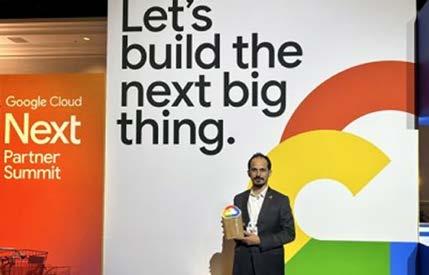
Ömer Faruk Kurt, CEO at Oredata.
state-of-the-art technologies. As we serve a wide array of clients across the telco, banking, e-commerce, gaming, retail, and manufacturing sectors, the Google Cloud Services Partner of the Year award reaffirms that we are on the right path”, said Ömer Faruk Kurt, CEO at Oredata.

the company for continued growth. She comes to F5 with a wealth of experience in roles that align people
strategies with business objectives in high-growth, innovative, and philanthropic sectors. Schramm brings a fresh perspective to building an innovative workplace culture at F5. Her recent tenure as Vice President, Strategy and Innovation at Google and previous senior roles at AWS and the Gates Foundation underscore her ability to drive transformative change.
“F5’s human-first and highperformance culture resonates deeply with me”, said Schramm. “I am drawn to the opportunity to infuse our workplace with a culture of innovation that inspires our employees to reach higher and drive meaningful impact. F5 is a special place, and I look forward to being a part of building upon F5’s strong culture while also driving initiatives aligned to our next phase of growth”.
Careem donates over $170,000 to regional causes during Ramadan
Launched on the first day of Ramadan, Right Click empowers Careem customers in the UAE, Saudi Arabia, Jordan, and Pakistan to discover more ways to connect with their communities, offering up simple ways to donate and change lives with just a few taps.
Over time, the platform aims to provide a seamless donations experience and increase transparency to show how customer contributions contribute to real on-ground impact.
in the UAE, Al Aman Fund, King Hussein Cancer Foundation, Tikiyet Um Ali and SOS Children's Villages in Jordan, Al Birr Society and Children with Disabilities Association in Saudi Arabia, and The Citizens Foundation in Pakistan.

Careem customers used Right Click to buy Quik Grocery boxes for those in need, buy meals as part of the Eat to Fill a Plate campaign, make direct donations or pay Zakat for regional causes, and support Palestinian relief by buying a Gaza T-shirt.
Partner organizations include Emirates Red Crescent and Dubai Cares
Vimbai Beverly Midzi, Associate Director - Corporate Affairs at Careem commented: “We’re excited to see so many customers use the Careem Everything App to give back to their communities. Right Click embodies Careem's purpose to simplify and improve the lives of those that need it most. We’re grateful to have the opportunity to help our customers make a meaningful impact through our platform, and we’re leveraging technology for good as we build long term social impact by investing in crucial building blocks of development, such as education, income generation and emergency relief.”
9 www.tahawultech.com MAY 2024
Lyra Schramm, Executive Vice President and Chief People Officer, F5.
REINVENTING CUSTOMER EXPERIENCES
CNME Editor Mark Forker spoke to Ahmad Dorra, CX Solutions Lead – Middle East, Africa & Turkey at Avaya, to learn more about how they are leveraging Gen AI to enhance their CX offering, the commonalties of challenges facing businesses embarking upon digital transformation – and the importance of the KSA marketplace for the global unified communications leader.
Ahmad Dorra is one of the region’s leading lights when it comes to customer experience.
Dorra has been with Avaya for 16 years, and has seen some changes during his time at the global CX leader, but there’s no doubting the fact that Avaya are enjoying something of a renaissance under the tutelage of CEO Alan Masarek.
CNME managed to catchup with Dorra during LEAP, in an effort to better understand its strategic approach to the KSA marketplace.
Avaya’s theme at the event was all about Gen AI, and Dorra outlined how Avaya is helping its customers really harness the power of Gen AI to enhance the customer experiences they provide to their end-users.
“We’re excited to showcase our innovations here at
LEAP. Even though the event is still only in its infancy, it’s undoubtedly one of the biggest technology conferences in the region alongside GITEX. Our theme at this year’s LEAP is all about Gen AI, and we are demonstrating our ability to enhance the CX delivered by our customers by leveraging the capabilities of Gen AI. However, it’s important to outline that we are allowing customers to have the autonomy to do it at their own pace. It’s a journey, and at Avaya, we want to build that strategy hand-in-hand with our customers, and in fact, I don’t like to call them customers, as I actually view them as partners. We listen to their needs, and then we work together to determine the best ways they can utilise these technologies, and infuse them in their overall DX and CX strategy,” said Dorra.
Dorra is cognisant of the hype surrounding Gen AI, but he stressed that a common trend amongst many enterprises he’s been speaking to was the lack of a coherent and robust AI strategy.
“When we talk about partnerships, we also mean it from the point of view that we adopt a consultative approach with our customers, and that’s exactly the stance we’ve taken with them in relation to Gen AI. There are definitely challenges around the technology such as data privacy, and the regulation that is needed around it to accelerate its adoption, so there are areas to iron out. However, one of the biggest challenges that we have encountered with our customers is the fact that many of our customer have not determined what their AI strategy is. We need to find out where they want to
10 www.tahawultech.com MAY 2024 INTERVIEW
AVAYA

go, and we need to set the expectations, because as I stated earlier AI is a journey, it’s not a destination. It’s a journey for all of us, and we are learning all the time, it’s an evolution in the AI space, and we know it has the power to really transform industries,” said Dorra.
Dorra reiterated his belief that customers need to have autonomy and control in
There are quite a lot of commonalities in terms of the challenges that we see across different industry verticals, and one of them is integration.”
terms of AI, and highlighted the need for concrete usecases.
“We believe that customers should decide on what are the best use-cases that will really serve their verticals, and once we establish that we can start building the journey. We’re proud that we are bringing a global experience when it comes to CX. However, Gen AI is a term, but what we need to do now is find the use-cases for the technology. What’s the problem facing your business, what challenges do you need to overcome? These are the questions that need to be asked, and again, once that is determined then you can start building usecases around that. One of the biggest challenges previously when we discussed AI was the challenge around adoption, with many customers conceding that they were somewhat reluctant to adopt the technology,” said Dorra.
11 www.tahawultech.com MAY 2024

INTERVIEW
The sheer scale of the transformation underway across the KSA is unprecedented.
However, trying to temper the expectations of some clients can be challenge, but again as Dorra declared honest and transparency is always the best policy.
“It can be a challenge, but we know how to overcome it. I think as long as you’re able to explain to the customer why it’s a challenge, and it’s not that we don’t want to deliver it for them then they will be OK. If you can explain to them what will happen if we go a certain way then I think the customers in general will be fine. Our responsibility is to provide a solution that the customer will appreciate and will help them enhance the services they give to their own customers. I think if you are transparent and tell them if we go far too fast on this, and cut corners it will causes serious headaches then they will appreciate that in the long-term. It’s also not going to take years either, it’s just all about convincing them that the path undertaken is the right one for all parties in order to achieve the outcome that we all want. Our message and our mantra is - ‘Innovation without Disruption’ and what that translates into is ensuring that our customers innovate in the right way, so we avoid disruptions later on down the track,” said Dorra.
In terms of the commonality of challenges facing enterprises across the

KSA regardless of industry verticals, Dorra conceded that integration was a sticking point for many businesses.
“There are quite a lot of commonalities in terms of the challenges that we see across different industry verticals, and one of them is integration. The integration with the backend systems can be very complex, some are related to legacy, whilst others are related to regulation. The banking industry for example is a heavily-regulated industry, so integration can be problematic to say the least. However, when it comes to the hospitality sector then it is totally different, so the requirements differ industryto-industry, but integration with backend systems is often an issue for many enterprises that are undergoing digital transformation,” said Dorra. Dorra concluded an excellent exchange by praising the benefits that LEAP provides as a platform
for Avaya to showcase their excellence when it comes to CX, and said it also enabled them to see the direction the KSA are taking it when it comes to their vision for the future of the nation.
“First of all, it’s a pleasure to be at LEAP, and Avaya is fully committed to helping the KSA achieve the goals and aspirations set out in their Vision 2030 program. The sheer scale and speed of the transformation across the Kingdom is off the charts. Being present at LEAP provides great value to us, as it allows us to engage with our partners, and gives us a platform to demonstrate and showcase the solutions and services what we can bring to the KSA marketplace. We are going to continue to invest in the KSA as the opportunities here are huge, and at LEAP, you can see the direction the Saudi government is heading, and that can help us with our strategic roadmap going forward,” said Dorra.
One of the biggest challenges that we have encountered with our customers is the fact that many of our customer have not determined what their AI strategy is.”
13 www.tahawultech.com MAY 2024
BUSINESS IS ‘BOOM’-ING
CNME Editor Mark Forker spoke to Ahmed El Hamouly, Head of META at Boomi, to find out more about how its agnostic cloud-native platform is built to scale, how the global intelligent integration and automation leader leverages its technologies to radically simplify the complexity of enterprise software – and how its Boomi AI is enhancing data transparency and security for its users.
Boomi is regarded by many industry analysts as one of the leading players globally when it comes to intelligent integration and automation. Can you provide our readers with a broader overview of the Boomi business model? In short, Boomi helps organizations radically simplify the complexity of enterprise software. Boomi is all about powering the future of businesses with smart integration and automation.
As the market leading iPaaS (Integration Platform as a Service) company, our role is to be the intelligent integration and automation leader of choice, globally, Boomi has a strong community of over 20,000 customers and a network of 800 partners around the world.
Businesses choose Boomi's market-leading platform to connect their apps, data, systems, processes and people, which speeds up
their digital transformation journey, and enables them to foster and harness innovation.
As we know AI is the future, and in May 2023, Boomi launched Boomi AI, which is a first-of-its-kind simplified user experience that leverages Generative AI to connect and integrate applications. Again, can you outline to our readers what the unique capabilities are in Boomi AI - and what impact does it have for the businesses that adopt the technology?
Boomi AI enhances the capabilities of our existing iPaaS platform by leveraging artificial intelligence to refine and optimize the data integration and automation
process for our customers. By leveraging Boomi’s vast data lake of over 200 million integrations, encompassing 70 terabytes of de-identified metadata, Boomi AI can efficiently generate the best integration from simple user intent, for exampleith Boomi AI, a user can use Boomi’s natural language interface to request: “connect SalesForce to Netsuite” and the integration will be created.
The user can then inspect the design and choose what to do next. . This enables users to meet their integration needs more effectively and rapidly than with other platforms, and ultimately empowers our users to achieve their goals.
Additionally, Boomi AI has recently integrated new features that enhance data transparency and security, such as the ability to track and flag the movement of Personally Identifiable Information (PII) across regions, thereby mitigating privacy concerns.
Furthermore, Boomi AI has introduced Documentation as a Service (DaaS), which automates the documentation process for both existing and newly created integrations, whether created by AI or not.
The beauty of Boomi is that our platform can continuously evolve to support our customer’s needs.
The Boomi platform was built with this ability to scale in mind, it’s agnostic, and can easily pivot to our customer’s needs, and innovation is in our DNA. This is what really sets us apart from legacy vendors.”
14 www.tahawultech.com MAY 2024
BOOMI
INTERVIEW
The impact this has for our customers is clear: By understanding user intention alongside our platform’s knowledge and community-driven insights, we significantly reduce the learning curve for our customers, minimize errors and enable faster outcomes.
The term AI Readiness has been coined by many analysts, but it can have a different meaning from one organization to another. From Boomi's perspective, how would you define AI Readiness, and what are the key components an enterprise needs to be AI Ready?
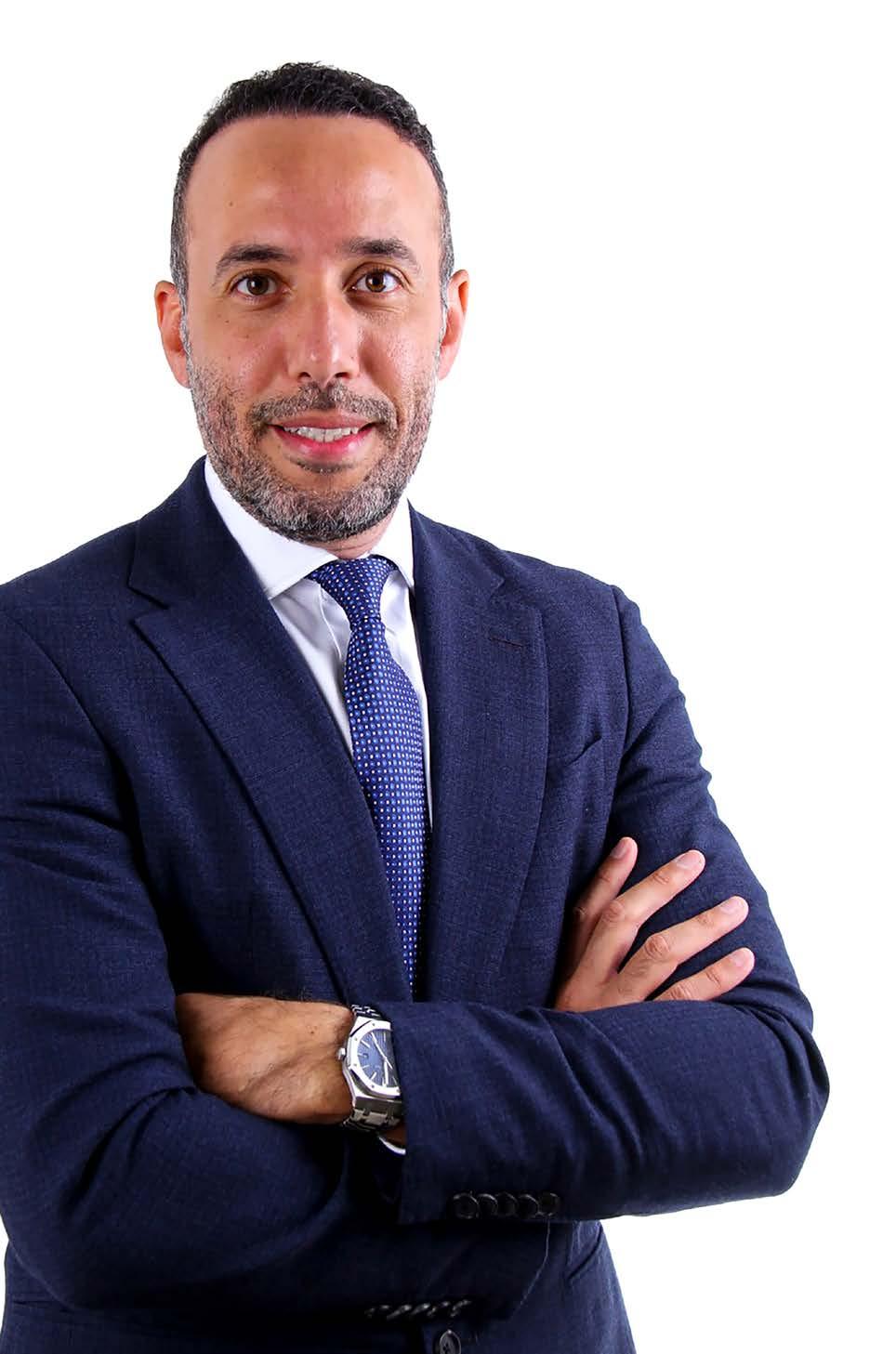
We’re in an AI revolution, and the pace of change we’re experiencing is more rapid than it has ever been.
Organizations today are really feeling the pressure of that change, expect disruption, and know they need to be prepared.
They also know that AI presents an opportunity, and they want to take advantage of this opportunity.
So, AI readiness is really about how an organization can become ‘digitally ready’ for the challenges of today while preparing for the opportunities that AI brings.
When we think about the key components for AI readiness, perhaps the most important are effective data management and governance. AI readiness requires developing a solid foundation of data trust, ensuring that the integrity and reliability of data are maintained.
At Boomi, we focus on connecting critical data systems and guiding organizations to establish comprehensive data governance practices, which are crucial for minimizing risks and maximizing the effectiveness of AI applications.
By instilling confidence in the data used for AI initiatives, organizations can prevent potential pitfalls and set the stage for genuine, sustainable transformation.
This strategic approach to data governance not only prepares organizations for
15 www.tahawultech.com MAY 2024
the current AI wave but also positions them to capitalize on future advancements in AI technology.
Becoming AI-ready also involves meticulous preparation and alignment of your company's processes and platforms to seamlessly integrate AI technologies.
This includes evaluating and automating existing processes where possible, and instilling strong ethical practices in handling data and AI operations.
The role of a supportive network of partners— vendors, integrators, and advisors—is crucial in providing the necessary guidance and challenge to navigate the AI landscape. Such thorough preparation ensures that the organization is not only equipped with the right technology but also fosters a mindset geared towards innovation and ethical responsibility in the AI era.
Boomi has enjoyed phenomenal success globally, but can you tell us about its market presence and market share across the META region?
Boomi’s presence in the region is a strategic one. And, I’m pleased to say our market presence across the region is growing rapidly.
Organizations in the region need solutions that are able to grow and scale with them.
Boomi has been serving a diverse array of industries such as transportation, retail, logistics, manufacturing, real estate and government, in the

region, building a legacy of trust and innovation for some time now.
Boomi is dedicated to supporting local businesses and to empowering organizations to harness the full potential of intelligent integration and automation solutions.
Boomi is well-positioned to respond to the unique challenges faced by our clients in the region, helping them power the future of business with cutting-edge technology and tailored support.
How excited are Boomi by the swathe of opportunities emerging in the Middle East, especially in the KSA marketplace?
We are thrilled to witness the expanding opportunities across the region, particularly in Saudi Arabia, where our presence is rapidly strengthening.
Our client base includes prominent names from a range of vital industries, such as maritime, manufacturing, distribution, and logistics.
This growth is not only
16 www.tahawultech.com MAY 2024 INTERVIEW

a testament to the trust and reliability that these major players place in our services but also reflects our deep commitment to understanding and addressing the unique challenges of each customer. As we continue to build our relationships and expand our offerings, we are more dedicated than ever to powering the success of businesses across META through innovative solutions and dedicated support.
In your opinion, what is it that ultimately differentiates Boomi from its market rivals?
Again, it’s Boomi’s ability to grow and scale with our customer’s businesses. Organizations today want to work with technology vendors that are cloud-native, and aren’t hampered by baggage caused by legacy technology.
The Boomi platform was built with this ability to scale in mind, it’s agnostic, and can easily pivot to our customer’s needs and innovation is in
our DNA. This is what really sets us apart from legacy vendors.
With a strong foundational platform, we are able to consistently innovate our offering to respond to technology shifts and customer needs.
Not only are we growing the services inside the platform, we’re also adding brand new product services along the way. Ultimately, this results in a continuously enhanced user experience.
17 www.tahawultech.com MAY 2024
“WE’RE MORE THAN JUST A CYBERSECURITY COMPANY”
– RAMI NEHME - OPSWAT
CNME Editor Mark Forker spoke to Rami Nehme, Regional Sales Director, South Gulf, Levant & Pakistan at GISEC 2024, to find out more about the significance of their new partnership with CPX.
Rami Nehme has been an integral part of OPSWAT’s phenomenal growth in the Middle East over the last few years.
OPSWAT appear to be going from strength-tostrength, and that was further evidenced by the recent signing of an MoU with CPX.
CNME Editor Mark Forker managed to catch-up with Nehme on Day 1 of GISEC, which is being held at Dubai World Trade Centre from April 23-25th, who outlined what the details of their new partnership with CPX will entail – and how OPSWAT are much, much more than a cybersecurity company.
Nehme declared that their new partnership with CPX would drive huge value for both entities - and reinforced
how OPSWAT are fully focused on protecting critical infrastructure in the UAE.
“Our strategic alignment with CPX is designed to empower our cybersecurity ecosystem. CPX has been in the cybersecurity business for years in the UAE, and we discovered that there was a lot of alignment we could do together in terms of enhancing the cybersecurity ecosystem across the UAE. Our partnership with CPX will also add huge value in terms of our strategic alignment with the UAE government. Our mission statement is to protect the critical infrastructure in the UAE, and by doing that we can enhance the public sector propositions around critical infrastructure within the cybersecurity ecosystem,” said Nehme.
Nehme also declared that OPSWAT was much, much more than just a cybersecurity vendor.
“OPSWAT is not just a cybersecurity company, we’re much more than that. We are focused on critical infrastructure protection, and we are one of the leaders in terms of protecting critical assets for our customers, whether that is IT, or OT. There has been a merge of IT and OT, and the introduction of digital infrastructure and the sheer volume of digital transformation means there is a lot for us to look at, and in many respects has been ignored for years,” said Nehme.
As Nehme pointed out the nuanced threat actors in the current cybersecurity
OPSWAT
18 www.tahawultech.com MAY 2024 INTERVIEW

landscape mean you simply need to have a full end-toend platform that is both compatible with other vendors and empowers you to protect your most critical assets.
“It’s not about anti-virus, or about plugging in your firewall, it’s about having a full platform that has the value of different engines that provides you with intelligence from multiple vendors. You can then introduce new products like CDR, which empowers and enables businesses to protect their critical assets, whether
that be data, or your physical assets and whether that is provisioned in a DMC area, or an Air Gap network. OPSWAT provides a full end-to-end platform for protecting critical infrastructure, and again that’s why we are aligning with CPX to enhance the services we provide,” said Nehme.
Nehme pointed out how OPSWAT’s suite of solutions help protect the critical
infrastructure of major industry verticals like Banking and Oil & Gas, who typically used Air Gap networks for protection.
“Traditionally, OT products were protected by an Air Gap network, but then following the introduction of AI and the evolution of cyberthreats, hackers became smarter, and discovered that they can penetrate the OT business, and the OT business is where the critical infrastructure is.
For example, the Banking, Oil & Gas and Government entities all had Air Gap networks where their critical infrastructure was being managed. This is where we play a key role, because we are introducing our solutions to protect both the IT and OT,” said Nehme.
Nehme concluded our conversation by reemphasizing how their partnership with CPX is beneficial for both parties.
“The MoU with CPX is just the start of our strategic partnership with CPX. CPX is already playing a key role in terms of helping their customers protect their critical infrastructure, so by collaborating with them makes a lot of business sense for us as we can combine our strengths to really enhance the offering we provide when it comes to protecting the critical infrastructure across the UAE,” said Nehme.
Our strategic alignment with CPX is designed to empower our cybersecurity ecosystem.”
19 www.tahawultech.com MAY 2024
THE BLAME GAME
Kevin Ripa, Senior Instructor at SANS Institute, spoke to CNME Editor Mark Forker at GISEC 2024, in which he says security teams have to stop playing the blame game, he explains the difference between traditional ransomware attacks and ones powered by AI – and how a lack of synergy can severely impact the security posture of an organisation.

Kevin Ripa is one of the most respected IT professionals in the global cybersecurity ecosystem.
In a decorated and distinguished career, his company Computer Evidence Recovery Inc, has provided consultancy services to multinational corporations, law enforcement agencies, governments and the general public on areas such as data recovery, malicious code removal and incident response to name just a few.
He is also a Senior Instructor at SANS Institute, and he was present at their booth during GISEC 2024, which was held at DWTC from April 23-25th.
CNME managed to secure an exclusive interview with Ripa in an effort to explore and examine in more detail some of the pressing issues trending in the cybersecurity space.
We kickstarted the conversation by talking about the role being played by AI in a new form of ransomware attacks.
There has undoubtedly been an increase in AIpowered ransomware attacks, and Ripa explained how AI-powered ransomware attacks differ from traditional ransomware attacks.
“An AI-driven ransomware attack is really no different from a normal one, except that it is crafted better. These attack vectors aim to socially engineer their target into clicking on them. In the past you would have to look out for spelling errors to identify a spam message.
SANS INSTITUTE
20 www.tahawultech.com MAY 2024 INTERVIEW

Now that AI is being used to generate these emails the grammar is perfect, making it easier to deceive the victim. AI-driven ransomware is also adaptable to its environment, and has the potential to recognise the security measures that are in place and bypass them,” said Ripa.
A report recently commissioned by Help AG shows that when it comes to vulnerabilities in cybersecurity, the human factor remains one of the most prevalent causes of attacks.
With sophisticated technology being developed to better protect data and assets, it surely must be demoralising for security experts that the human error remains one of the best gateways for hackers to penetrate systems and databases.
However, Ripa believes there needs to be a shift in mindset from security professionals, and declared that for far too long users have made been to be
scapegoats for frailties and bad practice when it comes to cybersecurity.
“It’s a multi-faceted approach, and we believe too much attention is being spent trying to educate the users on cyber hygiene, we need to move away from these buzz phrases that blame the wrong people for the problem. Our users in the computer space have been the scapegoat for far too long. I don’t disagree that cyber-education is important, but I don’t think that we can place people in front of the most advanced piece of equipment designed for human consumption, and expect them to know how to use it securely. At the end of the day, it is the job of our defenders and security apparatus to determine what happens after the user clicks on a link,” said Ripa.
The critical importance
of having a robust security posture has been something that has been championed by many security experts, and Ripa explained how the lack of synergy between an organisation’s human expertise, processes and technology adoption can affect an organisation’s security posture.
“Security needs to employ a multi-layered approach once an end user has been targeted as a vector for infiltration. We need to put in place additional layers of defense after a user has been infiltrated, such as identifying the type of document a user is trying to open and notifying them that it may be abnormal. Changing the mindset of management is also a critical factor, too often they do not allow security to do their job because it gets in the way of convenience. A mindset shift needs to occur at the upper levels of business in order to promote better synergy throughout their operations,” said Ripa.
The dial of the conversation then moved on to the topic of how security teams can better differentiate between common threats and targeted intrusions in an incident response scenario.
Ripa said that when it comes to prevention, the cybersecurity ecosystem simply has to do a better job of what he called baselining.
Response scenarios are all about learning what your ‘normal’ looks like and then defining the correct response should it ever become abnormal.”
21 www.tahawultech.com MAY 2024

“If you have a dedicated and properly deployed security team and defences in place, then those common attacks should never pose a real issue because they are so predictable. This would then allow teams more time to focus on the targeted attacks, which are very difficult to counter.
On a preventative level we need to do a better job of baselining, which is where security teams establish
the normal parameters of a user’s working hours and determining whether or not they work from home. With this information, the minute the team sees these systems being accessed outside of these hours it should be blocked immediately. In a
ransomware example, the average users access 35-45 files a week so the moment it hits 70 you should lock down the account and stop any services trying to operate it,” said Ripa.
Ripa reiterated the importance of security teams
Lately we’re seeing a lot of technology being sold in the name of emergency detection and response or EDR, but these days the adversary is so complex that EDR alone is not enough.”
22 www.tahawultech.com MAY 2024 INTERVIEW

defining what their ‘normal’ actually looks like.
“Response scenarios are all about learning what your ‘normal’ looks like and then defining the correct response should it ever become abnormal. That covers the preventative side of things, but we must also consider the incident reaction element. Reaction comes down to two main factors, training and experience,” said Ripa.
Ripa concluded a fascinating conversation by stating that EDR on its own is not adequate enough in repelling the complex security threats that currently exists.
“Lately we’re seeing a lot of technology being sold in the name of emergency detection and response or EDR, but these days the adversary is so complex that EDR alone is not enough. We need to use EDR alongside orchestration, which is what
we expect to see versus what we are seeing, and the automated response that should go along with it. For example, some of today’s ransomware goes from infecting the vector to full compromise in five hours or less. In a big enterprise a human will never be able to respond to that in time, whereas orchestration allows for early detection and the elimination of false positives,” concluded Ripa.
23 www.tahawultech.com MAY 2024
NEW LANDSCAPE
CNME Editor Mark Forker spoke to Avi Chawla, Data Scientist and Community Manager at Alport, in an effort to learn more about the findings that emerged in their comprehensive Global Generative AI Landscape 2024 report.
AIport are an online community that are dedicated to covering the latest international ML developments.
They have recent compiled and crafted the first volume of its Global Generative AI Landscape 2024.
This initial edition examines notable GenAI players worldwide across several key categories.
This is the first generative AI landscape analysis to emphasize regional attributes and encompass four times more nations than the average GenAI landscape available to the public.
The research process involved examining all 62 countries invested in the AI market, as featured in the Global AI Index by Tortoise.
In-house model developers were identified, filtered by the team of editors and data scientists, and subsequently cross-referenced with current GenAI landscapes from Sequoia Capital, Antler, Base10, and others, before being segmented into ten GenAI categories. #
As the final step, the data was divided into continental regions: North America, South America, Europe, Asia, Oceania, and Africa.
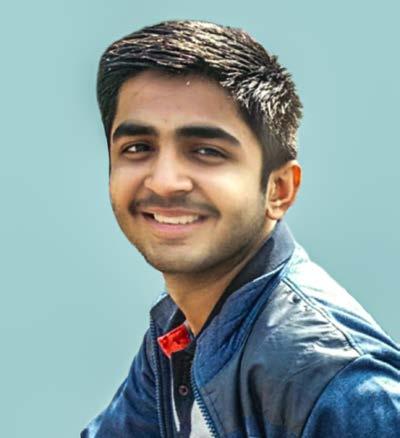
The first volume of the global GenAI landscape from AIport aims to present a balanced view of international companies, encompassing not only Western firms, but also those from other regions.
The landscape offers a comprehensive analysis, detailing which players are developing GenAI solutions, their locations, and the specific nature of their contributions. It contains a total of 128 generative models from 107 companies.
CNME spoke to Avi Chawla to find out more in terms of what direction Gen AI is headed, and what the
direction some nations are taking when it comes to developing the technology.
“We noticed that many generative AI landscapes tend to focus either on the Silicon Valley giants, or the tech powerhouses of Europe, covering no more than 10 countries on average. While this approach does serve its purpose, it can’t really offer a complete picture. To address this, we decided to dig deeper, and this is what we came up with after weeks of research. We believe Volume 1 of our Global Generative AI Landscape 2024 provides an objectively international outlook. And we’re also planning to delve into other aspects of GenAI more closely in the future,” said Chawla. A number of key highlights were surfaced as a result of the report commissioned by Alport.
Chawla pointed out that the adoption of multimodality outside of the North American marketplace was low.
“Of the 62 countries listed in the Global AI Index, only 35 develop their GenAI solutions in-house. Roughly 90% of them focus on one model type. The average number of GenAI models per company is the highest in North America, being the only region to have
ALPORT 24 www.tahawultech.com MAY 2024 INTERVIEW

at least one model from each of the 10 model categories. However, approximately 10% of all companies covered in the study have implemented multimodality in their GenAI models, with a majority of these developers located in the US. This indicates that while multimodality represents an emerging trend, its adoption outside North America still remains in the nascent stages,” said Chawla.
Chawla added that a total of 11 companies globally had developed more than one type of GenAI model.
He disclosed how tech behemoths such as Microsoft and Meta have developed 2-3 types of Gen AI models.
“Stability AI leads with five distinct GenAI model types (image, video, audio, 3D, and code), followed closely by OpenAI (chatbot, audio, video, and multimodal) and Google
(text, image, audio, and multimodal) – both with four model types. Microsoft, Meta, Tencent, Baidu, and Yandex are among those companies that developed between two to three types of distinct GenAI models. 13 companies have developed multiple models within a single GenAI category. AssemblyAI has two speech-to-text models, MosaicML offers two iterations of its MPT for code generation, while IPOXCap has introduced two chatbots designed for business intelligence applications,” said Chawla.
Chawla highlighted how the mission statement of Alport is to be much more
inclusive when it comes to giving people the full picture globally when it comes to Gen AI adoption and development.
“We are an online community of AI writers, researchers, and data scientists that aims to provide a transnational perspective on AI. We are aware that most ML-related publications primarily focus on the “big leagues” in the West.
However, at AIport, we seek to be more inclusive by widening the angle and broadening the narrative. This approach ensures a more diverse and impartial representation, offering a well-rounded take to the global AI community,” concluded Chawla.
We are an online community of AI writers, researchers, and data scientists that aims to provide a transnational perspective on AI.”
25 www.tahawultech.com MAY 2024
READY TO DOMINATE

Mark Moffat, CEO at IFS spoke exclusively to CNME Editor Mark Forker about his desire for IFS to be the market incumbent in asset and service management, how its ability to be industry specific differentiates them in what is a saturated marketplace – and how its ability to help their customers redefine productivity, outperform their competition and help them overcome any problem is why the company will hit $1bn in ARR by the end of 2024.
26 www.tahawultech.com MAY 2024 COVER STORY IFS
Mark Moffat has enjoyed a storied and distinguished career to date in the global technology ecosystem.
He spent the vast majority of his career at PwC, where he was the Chief Technology Officer for their UK and EMEA consulting business, before being appointed as Chief Customer Officer at multinational enterprise software behemoth IFS, in 2022.
In January of this year, Moffat became the company’s new CEO, and is now tasked with leading the company through its next chapter of growth.
CNME was afforded the opportunity to speak to Moffat for the front cover feature of May’s magazine, and what was evident throughout the conversation was just how enthusiastic and excited Moffat is by the challenge at hand.
The company has been left on solid footing by outgoing CEO Darren Roos, and many independent analysts believe the appointment of Moffat is a shrewd one, and that he is a perfect fit for IFS, who will want to continue to build on the success it has enjoyed in recent years, in what is an ultra-competitive cloud enterprise software market.
One area that IFS is hugely focused on is advancing its AI products, and that’s where we kickstarted our discussion.
IFS has said that its IFS. ai product can 'redefine productivity' and enable their customers to 'outperform competition'.
Moffat revealed that the
early investments IFS made in AI was now beginning to yield results for the company, especially when it comes to scheduling, optimisation and functionality.
“We’ve spent a number of years developing AI-based capabilities particularly around our scheduling, optimisation functionality. That scheduling and optimisation is used to help large field forces, and plants to be optimised for all sorts of conditional considerations. In the case of a field force its skills, capabilities, rooting, and the priority of service requests. That is all based on Machine Learning and vast computational capabilities to optimise the workforce, and we’ve done that for years, and right now it is one of our most in-demand solutions. In environments in which top-line is less easy to come by, cost containment and optimisation is something over the last few years that has been in vogue due to macro-economic conditions. We are really appealing to a CIOs expectation on behalf of a CFO to reduce costs. On average, and what I’ve seen over the last six months is deployments of our scheduling optimisation, and on average customers are taking 30% of costs out of their operations as a consequence of deploying,” said Moffat.
Moffat added that it also

yielded a positive impact in carbon reduction because a lot of these processes are energy intensive, whether it be human, or in plant, so it’s a double-whammy really.
Moffat also pointed out that another reason they’ve been successful is the whole setup of IFS is to be very deep in terms of understanding the needs of the industryverticals they are focused on.
“We are very deliberate about looking at ways in which we can contribute value to customers on a process dimension in the industry context. We have people in our sales, pre-sales, and delivery organisation that intimately understand Oil and Gas, utilities, construction, operational, regulatory, macro-economic drivers, and competitive landscapes, so they just know their stuff. We have sold a lot on that basis in the past because we can just bring a depth of understanding to what our customers want to achieve and that some of our competitors just can’t do –and we’re relentlessly focused on keeping that industry go-to-market strength,” said Moffat.
Moffat is of the belief that when it comes to AI, generic broad-brush AI technology can only get you so far.
“Microsoft Co-Pilot can only get you so far, the real potential return for us is when you can put AI at the
We live by what we deliver, because we know that is going to result in customers taking more from us.”
27 www.tahawultech.com MAY 2024
We want to create longterm sustainable value for our customers through technology and the delivery of transformation and outcomes for our customers.”
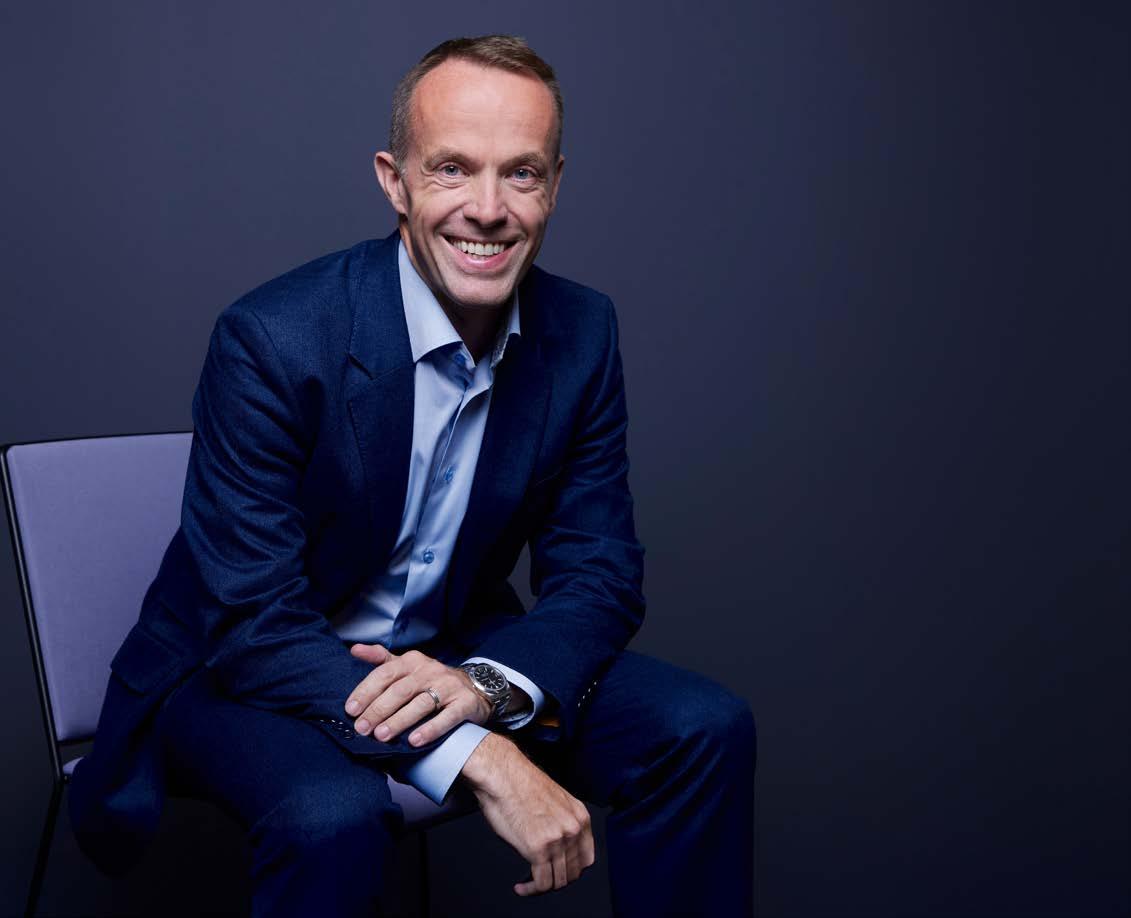
point of need in an end-toend process. If you have a manufacturing scheduling process, and when you can look at it, and literally step through it, imagine if we had this extra amount of data in a manufacturing line that would help us predict maintenance routines then what can we do with that? We could then build a partnership with the OEM to allow us to access all of the data that they have available for that particular plant equipment that we could surface in the application, so we could predict a
different level of predictive maintenance capability in our product. I think what we will end up doing, and this is what our roadmap suggests, is that we will provide any given industry with20-30 different usecases that will demonstrate in the context of the process the real return on invested capital for the deployment of that technology. We can then say to a customer here’s 40 things that we think you can benefit from, and we think the most value will be in these five so come with us on this
journey,” said Moffat. Moffat also revealed that he realised recently from speaking with customers that they are using IFS as a means to go to their boards to talk about what they are doing with AI.
“Every CIO and CFO is under pressure to show their board the benefits of AI. IFS. ai has phenomenal strength for us, and the way I think about the product is we have IFS Cloud, and IFS.ai is literally the process we’ve been through to identify these industry use-cases in
28 www.tahawultech.com MAY 2024 COVER STORY
the process context, and IFS. ai is an expression of them. You can take a composable solution, and say I want some project management, supply chain, X, Y, and Z – and you get the AI capabilities that come with it. It’s super cool, it’s relevant and everyone can get their head wrapped around it. There are a few things that underpin that from a development perspective. There is a data foundation layer that is part of IFS.ai that integrates a bunch of data from different functions and systems, such as business data, structured data, unstructured data, and it ingests that in a data schemer that allows us to compute and surface data to those use-cases that I talked about. That’s the layer that allows us to ingest OEM data as an example. If we have 2-3 manufacturing customers that have one dedicated OEM, then with their agreement, and us putting the right protections in place then we can give them a service that not only says based on your own situation we can give you predictive routines. However, what we can also do is using a population of 5-10 companies we can then aggregate that to give real-time insights into how the plant is performing relative to competition, so you begin to see the real power of this,” said Moffat.
Generative AI has dominated the tech landscape since the emergence of ChatGPT and Open AI at the end of 2022.
According to Moffat, he feels Gen AI has democratised
the technology for the general public.
“As I stated earlier, we’ve been investing in AI for quite some time, so that gives us a head-start. What I actually think Generative AI has done is put AI in the hands of the masses, it has democratised AI, and it has really captured the imagination of everyone, and by capturing the imagination it has captured investment dollars, albeit more from a consumer perspective. It has created a cycle of investment and innovation and it benefits us massively because a lot of that investment is bringing to bear significant quantum leaps in computational capability to give a cost-to-serve that we’ve never seen before. If you apply this to what you could describe as the more conventional AI then for us it completely accelerates the return on invested capital (ROIC) for our customers in terms of what we give today, and what we can do tomorrow in Industrial AI,” said Moffat. Moffat insists that IFS are all about Industrial AI, and said the ongoing AI revolution was really helping IFS massively in terms of accelerating what they already have been doing.
However, he pointed out how unstructured data was a problem for many businesses.
“One of the issues we’ve been seeing, and one of the reasons we are building this data layer is the fact that a lot of our customers, and I think this is a challenge in the business environment too, is that they don’t

necessarily have data in a clean enough manner to allow AI capabilities to be delivered on. You can use unstructured data, but you definitely need structured data. The way we think about it is there is no generic AI capability, and everything is industry specific from our perspective. We’ve gone through a process as a company to really look at our roadmap, and use our industry knowledge, understanding, and engagement with the broader external environment to stress test the use-cases that were deployed, and it’s made available directly in our solutions in the product,” said Moffat.
The IFS CEO also highlighted how the company was fully committed to giving his customers ‘different outcomes’ from AI technology.
“We also want to make sure that we use the fact that we’ve got a single data model in a strategic product such as IFS Cloud, that is underpinned by AI orchestration and data layers to aggregate data. That enables us to get that thread of intelligence where we can combine project, asset, and service data with other external data to give our customers completely different outcomes,” said Moffat.
IFS is recognised by many as a real leader when it comes to sustainability, and has been progressive when it comes to really implementing impactful change.
IFS is not only committed to reducing their own carbon
29 www.tahawultech.com MAY 2024

footprint, but is working closely with their customers to ensure they hit their sustainable objectives and targets.
“We want to create longterm sustainable value for our customers through technology and the delivery of transformation and outcomes for our customers. The ROIC, time to value, and ease of use are three things that we are super focused on delivering for our customers. It is important for us to help improve our customers industries and contribute to society whilst doing that. It’s crucial for us to capitalise on those three fundamentals, and we want to be more relevant to our customers than just delivering dollars,” said Moffat.
Moffat illustrated his unwavering commitment to sustainability following his decision to appoint a Chief Sustainability Officer to their executive board, a clear indication that they mean business when it comes to sustainability.
“It’s important for me that we get sustainability front-house to show what we stand for, and that’s why when I became CEO, I almost immediately appointed a Chief Sustainability Officer to the executive board. Sustainability now has prominence right at the top of our company, and
My long-term aspiration and ambition for IFS is for us to dominate asset and service.”
it signals to our customers, and market how important we see sustainability. We think about ESG on three key pillars. The first one is the excellence of our business. We’re committed to lead by example, and that’s us responding to regulation in advance of what we need, so we are walking the talk effectively. The second pillar is all about supporting our customers in terms of helping them achieve their sustainability goals by using all the capabilities of our platform in order for them to be able to do that in a differentiated manner to our other competitors. The third pillar is from a broader impact perspective, and we are fully committed to making sure that we are having a positive
30 www.tahawultech.com MAY 2024 COVER STORY
contribution to our industry and society,” said Moffat.
Moffat also pointed to the work done by their IFS Foundation, and referenced the incredible work they do in Sri Lanka.
For the last three years, IFS have also been running their Change for Good Awards, and highlighted that a recipient of one of their awards was based in the Middle East.
“We’ve been running the awards for three years now, and it’s designed to celebrate our customers who have made a real significant impact through their sustainable practices. From a Middle East perspective, we had International Maritime Industries (IMI), a customer from Saudi Arabia win in 2023, for their outstanding dedication to the environmental protection of maritime environment stewardship,” said Moffat.
One of the first things Moffat did when he assumed control of IFS was announce that he was going to meet with 100 customers in 100 days.
In the early stages of his career, Moffat was an auditor and the integrity of numbers are important to him, so it should come as no surprise that’s he’s still on track after 81 days.
“In my first keynote to the company following my appointment as CEO, I pledged that I would meet 100 customers in 100 days, and we are now on Day 81, and I’m still on track. I’m not cheating either, so if I get on a call with five customers, I’m
not counting those 5, it has to be a meaningful dialogue with a customer, where I meet the CEO one day, and the CFO the next, but again that’s still counted as one meeting. I got an email last week from a customer who said they love the fact that we are meeting 100 customers in 100 days, but when are you coming to see us?! It’s been such a positively received move that I may have to do 200 meetings in 200 days, but I’ll get through the 100 first,” said Moffat.
The cloud enterprise software industry is a very, very competitive marketplace, but Moffat declared he doesn’t focus on the competition, and believes that what differentiates IFS from the rest of the competition is their deep industry knowledge, and disclosed that they are chasing the functional domain of asset and service.
“I never look at what our competition is doing. If we are as customer obsessed as I know we are, and if we are listening to the needs of our customers, and we are responding from an R&D and go-to-market perspective, and we are meeting our customer needs, then we don’t need to reference ourselves to competitors. We are running our own race. However, I do of course listen to what customers tell me about what differentiates us from the rest. What our customers tell me is the industry focus we have is so important to them, we understand the context and we talk their language. The commonality of our industry

focus is capital intensive industries with a big focus on asset and service. We are really lucky because we are really chasing that functional domain, but we happen to have an industry-leading ERP that supports it,” said Moffat.
Moffat also pointed out that he wants to give his customers the autonomy and flexibility to curate what they want.
“We get into a conversation with customers about delivering on an asset, or service management usecase, and then we’ve got that ERP capability to bring along with it, and we’re delivering all of that on one platform. It is one platform with one data model that allows our customers to curate exactly what they need to give them a composable solution. We are relentless in our pursuit to be the No.1 player for asset and service. We can also very naturally integrate with the landscape, and we’ve put a lot of effort into integration and all of our capabilities are AI-enabled. We live by what we deliver, and we know that is always going to result in customers taking more from us,” said Moffat.
Moffat reiterated that the long-term ambitions for IFS is to ‘dominate asset and service’.
“My long-term aspirations and ambitions for IFS is for us to dominate asset and service. I want the IFS brand to be synonymous with asset management and service management functional domains in the same way you could argue that Workday is
31 www.tahawultech.com MAY 2024
for HDM, SAP and Oracle are for finance, and Salesforce is for CRM. That’s where we are going, and we want to dominate that functional domain,” said Moffat.
IFS Connect Series is coming to Riyadh on May 6th.
The theme this year is all about unlocking business value, and the three dimensions are productivity, predictability and agility.
“Traditionally, what we’ve done is have a global conference every other year, and the last global conference we had was in 2022. In the alternate years, we have regional connect events. However, there is such demand from our customers to get together as a community. This is the first year we’ve run the global conference, and the regional connect series in the same calendar year. It’s clear to see from the registrations for upcoming events and the numbers we had at our Connect series in Birmingham, Paris and Copenhagen that we will be running both these series every year, such is the demand. We promote a

sense of community, and we recently launched our user community in France, where we encourage our customers to work together to compare and contrast and work with us as a community,” said Moffat.
The IFS global customer
conference entitled ‘IFS Unleashed’ will take place in Orlando in October, and Moffat revealed some big names that will be joining him on stage.
“At our global conference we will be joined by Steve Lucas, who is the CEO of

32 www.tahawultech.com MAY 2024 COVER STORY


Boomi, and he will join me on the main stage to talk about how we are working together to make integration easier for customers. Every single session on stage at our Unleashed event features a customer story with a real application of an AI use-case. Customers will get a very comprehensive program on AI innovation, and for all the reasons I have said it will be very industry focused. We are also going to be very focused on what we call transformative demos, which brings to life practical model type sense on how AI is going to work with business processes. We also have a principle at IFS, which we call running to the fire. If we see something as a problem,
we don’t shy away from it, we don’t blame anyone, we just go straight after it and find out how do we fix the problem. We want our customers to be successful advocates of IFS, so if there is a problem then we run to the fire. There is no problem that can’t be overcome, every problem has a solution, and that’s our attitude,” said Moffat.
Moffat concluded a brilliant conversation by revealing some of the
staggering projected numbers the company is expected to hit by the end of this year, describing them as champagne moments.
“This year we will hit $1bn of ARR, and a billion euros of ARR through 2024. This is a major, primetime, world stage validation of what the market is telling us what we are doing. We are really proud of this achievement, and we are calling them champagne moments,” concluded Moffat.
We also have a principle at IFS, which we call running to the fire. If we see something as a problem, we don’t shy away from it, we don’t blame anyone, we just go straight after it and find out how do we fix the problem.”
33 www.tahawultech.com MAY 2024
TECH & STARTUP SHOW
Creating A Bold Future For Africa
Discover
Meet




UNLOCK AFRICA’S DIGITAL FUTURE AT GITEX AFRICA MAY 29-31, MARRAKECH, MOROCCO IN AFRICA VISIT THE ◼ Ai Everything (AI x Cloud x IoT x Data) ◼ Cybersecurity ◼ Consumer Tech ◼ Digital Finance ◼ Telecoms & Connectivity ◼ North Star Africa ◼ Digital Cities ◼ Digital Health
MORE tech brands
with MORE tech professionals
Network
MORE tech solutions
MORE ground-breaking opinions … than anywhere else on the entire African continent FIND YOUR WORLD DUBAI ORGANISED BY HOSTED BY UNDER THE AUTHORITY OF Under the High Patronage of His Majesty King Mohammed VI 29 - 31 MAY 2024 MARRAKECH Book to secure your Early Bird Ticket today. Expires 18 April 2024 gitexafrica.com
Hear
BE IN CONTROL
CNME Editor Mark Forker spoke to Gavin Stone, Director of Product Management, at NinjaOne, to find out what technologies’ businesses need to adopt to bolster their endpoint detection and response, how they can improve the efficiency of their endpoint management services – and how NinjaOne’s platform centralizes end-point control.
What key technological advancements do you believe are essential for organisations aiming to enhance endpoint control and automation?
Organisations aiming to bolster endpoint control and automation must prioritize several key technological advancements.
The integration of advanced endpoint detection and response (EDR) solutions provides organisations with granular visibility into endpoint activities, enabling proactive threat hunting and rapid incident response.
Moreover, implementing robust endpoint orchestration and automation platforms is crucial for streamlining patch management and vulnerability remediation processes.
These platforms enable organisations to automate routine tasks such as patch deployment, configuration management, and vulnerability scanning, thereby reducing manual errors and enhancing operational efficiency.
Integrating threat intelligence feeds and security analytics tools empowers organisations

to prioritize vulnerabilities based on their criticality and potential impact, enabling more strategic resource allocation and risk mitigation efforts.
By leveraging these technological advancements in tandem, organisations can establish a comprehensive endpoint security posture and effectively safeguard their IT infrastructure against evolving cyber threats.
How can organisations address and manage challenges effectively to ensure a seamless and secure IT portfolio?
Organisations can effectively address and manage challenges to ensure a seamless and secure IT environment by adopting a comprehensive approach that encompasses several key strategies.
Firstly, investing in robust endpoint management solutions is crucial. This includes deploying setting policies for immediate remediation, automated patch management, advanced threat detection systems, implementing endpoint security measures, and employing encryption protocols to safeguard data both in transit and at rest.
Secondly, establishing clear governance structures and policies is essential. This involves defining roles and responsibilities, setting
The NinjaOne platform minimizes time spent on helpdesk support, centralizes endpoint control in one single intuitive dashboard, and drives operational efficiency through its comprehensive suite of features and capabilities.”
35 INTERVIEW www.tahawultech.com MAY 2024
NINJAONE
LENOVO

security standards, and ensuring compliance with regulations and industry best practices.
Regular risk assessments and audits can help identify vulnerabilities and prioritize mitigation efforts.
Moreover, fostering a culture of cybersecurity awareness among employees through training and education programs can significantly mitigate risks associated with social engineering attacks and insider threats.
By combining these proactive measures with ongoing monitoring and incident response capabilities, companies can effectively manage challenges and maintain a seamless and secure IT portfolio.
For organisations looking to improve automation and efficiency in IT management services, what strategies and tools do you recommend, considering the dynamic nature and ever-changing demands on the MSP business and security requirements?
For organisations striving to boost automation and efficiency in IT management services within the everchanging landscape of the MSP business and security
requirements, several strategies and tools are essential.
Embracing cloud-native solutions offers scalability and agility, facilitating rapid adaptation to shifting demands. These platforms provide centralized control and visibility across diverse IT environments, enabling streamlined deployment, monitoring, and management of endpoints.
Integrating advanced security technologies into IT management services is paramount for safeguarding against evolving threats.
Next-generation security solutions like endpoint detection and response (EDR) systems and intrusion detection/prevention systems (IDS/IPS) provide real-time threat detection and response capabilities.
The Zero Trust security model ensures strict access controls, reducing the risk of unauthorized access and lateral movement within networks.
Continuous monitoring and robust vulnerability management practices help
organisations stay ahead of emerging security risks by promptly identifying and addressing vulnerabilities. By implementing these strategies and leveraging appropriate tools, organisations can effectively navigate the complexities of the MSP landscape while meeting evolving security requirements.
What best practices do you suggest for organisations to proactively manage and mitigate security risks across their endpoint infrastructure?
For organisations to proactively manage and mitigate security risks across their endpoint infrastructure, several best practices are paramount: They need to implement robust Endpoint Protection Solutions - including antivirus, firewall, and intrusion detection capabilities. They need to use Automate Patch Management – which is the automation of the patching of software and operating systems to address all known vulnerabilities.
Enforce strong Access Control by employing multi-factor authentication to ensure only authorized users and devices can access sensitive data and implement a Zero Trust Security Model - for continuous verification and authentication of all
Fostering a culture of innovation and adaptability within the company enables teams to stay abreast of emerging technologies and trends.”
36 www.tahawultech.com MAY 2024 INTERVIEW
devices and users attempting to access the network.
In addition to this, they need to conduct regular security trainings by creating awareness programs for employees to recognize and respond to security threats effectively.
We need to establish incident response plans – and regularly test them through tabletop exercises to enable swift and effective response to security incidents.
Unified Endpoint Management is a goal for many organisations. Can you share insights on how strategic alliances and integrations with industryleading solutions contribute to achieving a seamless and unified approach in Endpoint Management?
Strategic partnerships and integrations with industryleading solutions play a pivotal role in achieving a seamless and unified approach in Unified Endpoint Management (UEM) for organisations.
By collaborating with trusted partners and integrating their solutions, IT teams can leverage the expertise and capabilities of multiple vendors to address diverse endpoint management needs comprehensively.
These alliances enable interoperability between different solutions, facilitating seamless data exchange and workflow integration across the entire endpoint management ecosystem.
Furthermore, integrations with industry-leading solutions empower IT departments to access
advanced features and functionalities that enhance endpoint security, compliance management, and automation capabilities.
Ultimately, such strategic partnerships and integrations enable organisations to streamline their endpoint management processes, improve operational efficiency, and strengthen their overall security posture.
How does NinjaOne's platform minimize the time for helpdesk support, centralize systems management and drive operational efficiency?
The NinjaOne platform minimizes time spent on helpdesk support, centralizes endpoint control in one single intuitive dashboard, and drives operational efficiency through its comprehensive suite of features and capabilities.
By offering a unified dashboard for monitoring and managing endpoints, technicians can identify and remediate any issues proactively in real-time, significantly reducing time spent on troubleshooting and support tasks.
90% of NinjaOne customers report that they have been able to reduce time spent on patching.
The platform's automation capabilities streamline routine processes such as patch management and software deployment, freeing up IT resources to focus on more strategic initiatives.
NinjaOne empowers IT teams to optimize their IT operations, enhance
productivity, and deliver superior support to end-users.
As technology continues to evolve, what steps can organisations take to futureproof their IT infrastructure and navigate the dynamic IT landscape?
To maintain a healthy, secure and fully optimized IT infrastructure organisations must be able to navigate the dynamic IT landscape amidst evolving technology, security threats and compliance regulations.
Fostering a culture of innovation and adaptability within the company enables teams to stay abreast of emerging technologies and trends.
Investing in flexible and scalable infrastructure solutions, such as cloud native endpoint management and protection platforms, allows organisations to easily scale resources based on evolving needs.
IT departments should make routine assessments of their IT tools and processes to help identify areas for improvement and ensure alignment with business objectives.
Embracing automation technologies streamlines operations, enhances efficiency, and prepares organisations to handle future challenges effectively.
Fostering partnerships with technology vendors and industry peers facilitates knowledge sharing and access to expertise, enabling organisations to stay agile and responsive to change.
37 www.tahawultech.com MAY 2024
YOU NEED A ‘CO-PILOT’ FOR SECURITY
CNME Editor Mark Forker secured an exclusive interview with Tariq Halawani, Executive Director of Enterprise Solutions at Microsoft UAE at GISEC 2024, to find out more about the launch of its Security Copilot, the need to use AI responsibly and the biggest threats he sees emerging across the cybersecurity ecosystem.
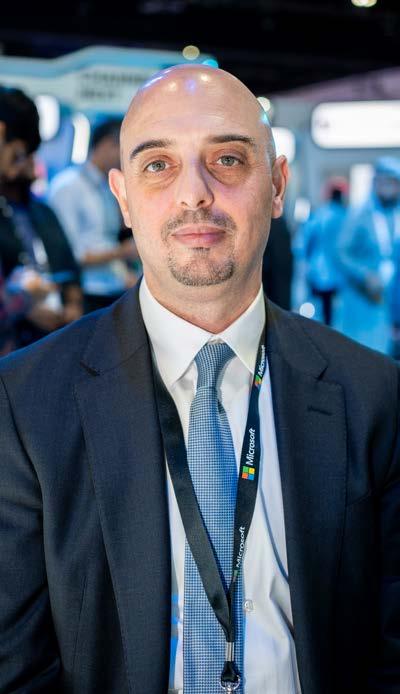
Tariq Halawani is one of the most respected technology leaders in the Middle East.
He spent time at Trend Micro and Nortel in the early stages of his career, but he made his name at Microsoft when he joined the company in 2009.
In the 15 years that have elapsed since he joined the US tech behemoth, he has served in different roles within Microsoft, such as the Regional Sales Manager for Azure, and the Regional Director - Intelligent Cloud.
He is now the Executive Director of Enterprise Solutions at Microsoft UAE, and CNME managed to secure an exclusive interview with him at GISEC 2024.
At GISEC, Halawani highlighted how Microsoft was demonstrating its Copilot for Security, which he said was designed to empower

38 MAY 2024 INTERVIEW
MICROSOFT

cybersecurity professionals amidst a backdrop of a constantly evolving threat landscape.
“With AI, and more specifically Generative AI, the threat landscape is changing very quickly. It is quite evident that the volume of threats is now beyond what a team of cybersecurity professionals can handle on their own. We’re bringing AI to the forefront of cyber defence systems, and that’s why we’re creating all these
We process more than 65 trillion threat signals every day throughout the different systems and cloud services that we run globally.”
foundational AI models like GPT4 and building specific security trained models that can compliment cybersecurity professionals to be able to deal with the speed and the scale of attacks that they are facing every single day. At GISEC, we’re launching Microsoft Copilot for Security, and what we want is for cybersecurity professionals to view Copilot as a virtual assistant. We process more than 65 trillion threat signals every day throughout the different systems and cloud services that we run globally. However, to make those signals effective and give actionable insights, you need AI power and massive compute power, and that’s what Microsoft’s security Copilot gives users,” said Halawani.
Halawani also outlined how he feels their Microsoft Copilot for Security in many
39 MAY 2024

ways is democratising AI technology.
“When you use Copilot for Security you use natural human language to interact with it, and that democratises the technology in many ways. You don’t need to write code to be able to use it. It’s a virtual assistant that is there to help you and will respond to you with details on how threats are evolving and will provide you with information on how you can respond with robust defence strategies. In summary, it is designed for humans, and it is all about natural language, and less about having a skillset with coding for people to be able to protect effectively,” said Halawani.
The shortage of skills in the
cybersecurity and IT industry in general has been well documented.
The fact that technology is evolving and developing faster than ever before means that the skills gap is actually widening.
However, as Halawani explained, Microsoft is fully committed in terms of leveraging their technology to help businesses overcome the challenge.
“The skills gap in the cybersecurity domain is not something new, it’s been a huge problem for a long time. However, I do think that over the last five years in
collaboration with our global partners and customers we have been trying to address the shortage in terms of skills.
I think it’s also important to note that the technology landscape is changing very quickly, which makes it very challenging to skill at that same speed,” said Halawani.
Halawani highlighted that Microsoft had created enablement programs to help their customers and partners be able to capitalise on the capabilities provided by AI.
“With the advent and launch of these new AI services we have built new enablement programs
We want to ensure that our customers and partners are adopting AI responsibly.”
40 www.tahawultech.com MAY 2024 INTERVIEW

for our customers and partners, and they have been ultimately designed to help cybersecurity professionals better understand how they can leverage AI to tackle the everyday security problems that they face. We are also taking it back into the design of every product we have, we’re looking at ways in which we can make it more intuitive and easy to use, we need to remove the complexity. We want to make it as easy as possible and to give cybersecurity professionals access to actionable insights,” said Halawani.
As a global technology leader, Microsoft has a lot of responsibility when it comes to the technology they deploy. As the explosion of
Generative AI continues to sweep across the region, the topic of Responsible AI has emerged as a key talking point.
Microsoft is a leader when it comes to establishing frameworks and guidelines around Responsible AI, and as Halawani explained is working closely with the UAE government to accelerate adoption.
“We want to ensure that our customers and partners are adopting AI responsibly, and are adhering to safety and compliance measures that are outlined in our frameworks. We are very engaged, and work closely with policymakers and regulators to establish ethical AI frameworks for adoption. One of the examples of this is here in the UAE, where we work closely with the UAE government regulator to ensure that there is guidance for government entities to adopt AI in industries such as healthcare, finance, and the services that they provide for citizens and residents across the UAE. We want to ensure that despite the fact the technology is evolving and maturing all the time, that we do have some guidelines and guardrails around AI – and we are working very closely with the UAE government on this,” said Halawani.
When it comes to Gen AI, and AI in general, many commentators continue to express concerns over data privacy.
However, Halawani reiterated the fact that Microsoft handles its
customers data very sensitively.
“We have Open AI models in the UAE, but customer data will always be the customer’s data in our eyes. As a processor of some of these algorithms, we don’t take customers data out of their tenant, and his data will remain within it. We don’t use the data to train our public models, and we don’t use customers data for monetization through advertising. These are core principles at Microsoft and we never compromise on them,” said Halawani.
In terms of some of the key security threats emerging, Halawani concluded a brilliant conversation by pointing to the area of Deep Fakes as being a major issue for many enterprises across the region.
“There has been a huge increase in the sheer volume of identity attacks across the board. However, with cyberhackers now incorporating AI into these attacks, the scale and speed of these attacks are unprecedented in many ways. They have massive compute power that they can now unleash, and identity attacks are now undoubtedly on the rise. In the Middle East region, there has been a huge rise in ransomware attacks. However, deep fakes are becoming a huge, huge challenge in my opinion. We are seeing a lot of content being created and that content generation is leveraging AI and that is causing headaches for a lot of our customers,” concluded Halawani.
41 www.tahawultech.com MAY 2024
ORDER NOW
Laith Al-Bazirgan, Head of Retail – MENA, at Endava, believes that if retailers can modernise their order management processes then that can ensure they deliver the experiences their consumers want in the current CX economy.
The way we shop has changed. The years-long, steady flow of commercial transactions toward digital platforms culminated in a staggering surge during the pandemic years.
And with this surge came an increasing proportion of sales that originated on social media platforms. As far back as 2020, a Mastercard survey in Saudi Arabia indicated that 58% of the Kingdom’s consumers had discovered a new vendor through Facebook, and 61% through Instagram.
A separate study showed that during Ramadan 2022, 87% of Saudi consumers used social platforms to look for seasonal deals and promotions.
And in the United Arab Emirates (UAE), research last year showed 48% of Gen Z and millennial shoppers would be open to shopping through social media channels.
This is the digital native writ large — not just an online shopper, but a social shopper. Social media feeds are now points of sale, and everything to do with the sales cycle must now be woven into social platforms by any retailer that wants to capture buyers.
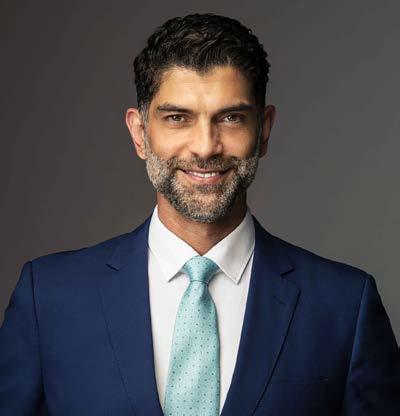
The fundamentals of the sales strategy remain constant. For example, we know that impulse often drives purchases, and that same impulsiveness manifests as impatience when waiting for delivery. The buying process must be smooth and so must the information flow to the customer from the warehouse, dispatcher, and delivery driver.
If the consumer cannot get all that attention to detail — the product they want, when they want, how they want, through the channel they want — from one brand, then alternative suppliers are just a few clicks, taps, or swipes away.
Digital natives will barely remember a time when there was just one fulfilment model: Visit Shop. Today, we still have that model, but we also have online and social, not to mention hybrid models such as Buy Online, Pickup at Curbside (BOPAC); Reserve Online, Pickup in Store (ROPIS); and Buy Online, Return in Store (BORIS).
Further complications are found in the myriad payment options retailers must accept for fear of losing a customer if they do not. Buy Now, Pay Later (BNPL) is just one example.
Today’s order management systems must somehow cater to all these fulfilment processes and subprocesses or the brand will become irrelevant.
LEGACY SYSTEMS LEAVE RETAILERS IN THE LURCH
The term “legacy system” is rarely used in technology to describe something that does everything one requires without want for upgrade. Often the phrase is followed by the word “cannot”. For retailers, legacy systems cannot live up to the changes happening in order fulfilment. In the past, in some organisations, ERP platforms were adapted for order management, but ERP was never designed to meet the pace of change we see now.
These legacy systems cannot cover new order processes because the order process itself is immutable. It is hard-coded, meaning traditional ERP offers no
42 www.tahawultech.com MAY 2024 OPINION
ENDAVA
means to redefine how an order works in a way that will delight the customer and preserve margins.
ACCELERATING AT MACH SPEED
This is a problem. Retailers are trapped by complexity and have no control over their newfound challenge of balancing customer promises and fulfilment costs as they migrate to unfamiliar hybridretail paradigms.
Retailers must modernise their order management systems if they are going to satisfy the needs of the social shopper. What they need is MACH — microservices, APIfirst, cloud-native SaaS, and headless architecture.
As the acronym implies, this framework is designed around the speed and efficiency that the modern consumer demands. Microservices replace traditional monolithic architectures with smaller, independent modules, each of which is responsible for a specific business function. Microservices allow retailers to develop, deploy, and manage individual components more efficiently. Order management systems can then respond to market dynamics and changing consumer preferences. In other words, the MACHcharged retail business can innovate more freely, introducing new features as soon as a need arises.
UNIFORMITY ON DEMAND
API-first design also contributes to agility. It ensures all functionality is
accessible via standardised APIs. Because there is a consistent interface across operating systems, platforms, and devices, organisations can make changes frictionlessly and integrate easily with social media channels.
This ability to develop whenever, however they want allows retailers to continually streamline the ordering process and provide a unified shopping experience that looks and feels the same across all engagement channels.
Cloud-native SaaS brings the power of the cloud into the retailer’s orbit. The cloud is known for its unparalleled scalability, flexibility, and always-on reliability. Retailers gain access to all the elements required to build up-to-date user experiences, including the reliable data storage and hosting solutions that will allow the business to efficiently manage large volumes of orders and data.
Additionally, the retailer benefits from elastic scaling and automatic updates. This not only means its IT department can dedicate itself to more creative tasks; it means that business functions can expand and contract to fit fluctuations in consumer demand.
Meanwhile, headless architecture — a decoupling of the front-end user interface from the logic of
back-end systems — allows retailers to focus more directly on personalised shopping experiences that span multiple channels.
More specifically, the headless approach allows enterprises to tailor the experiences they provide to cater for social-media shoppers and still maintain consistency across all touchpoints. With this final element in place, retailers can start to engage customers wherever they are, no matter what device or platform they are using — website, social pages, or app.
HAPPINESS IS…
A modern order management solution calls for the MACH framework. It is the only approach that guarantees the flexibility to make personalised promises to consumers throughout their journeys. The digital native will engage with the brand the way they want, through front-end apps that show the right information at the right time and steer the shopper to the optimal result.
MACH also adds value for the retailer because it is built to boost conversion rates and loyalty, while shrinking return rates. This all leads to ambassadorial reviews of the brand on social feeds. AKA: happy shoppers.
Today’s order management systems must somehow cater to all these fulfilment processes and subprocesses, or the brand will become irrelevant.”
www.tahawultech.com MAY 2024
43
MANUFACTURE YOUR SUCCESS
Vibhu Kapoor, Regional Vice President – Middle East, Africa & India at Epicor, believes that Digital FP&A systems are essential for keeping the region’s manufacturers on the optimum course for long-term financial health.
Manufacturing in Saudi Arabia is expected to be a US$160-billion industry this year, with a CAGR of 2.88% between now and 2028.
Egypt, meanwhile, is set for a value add of US$44 billion by manufacturing in 2024 and a CAGR of 9.29% to 2028. The list goes on of regional manufacturing sectors enjoying sustained periods of growth.
While the economic impetuses for these surges vary, each national industry holds one thing in common: in manufacturing, data is everything. Key performance indicators (KPIs) are integral to every improvement.
The problem lies in the integration of disparate KPIs — production, inventory, finance, and so on — so manufacturers can get a unified view of operations. These business intelligence (BI) capabilities are commonly found in modern FP&A systems and their insights can greatly enrich decision-making and targetsetting across the enterprise. Here, we explore the nine KPIs that are most important to the modern manufacturer.

1. Unit contribution and profitability
The net revenue attributed to each product or service unit is an important steppingstone to understanding profitability. Profitability itself can tell the story of the ease with which earnings were accrued over a specific period. Both metrics should
be supported by the ideal FP&A solution.
2. Cost of goods sold (COGS) COGS is crucial to FP&A because it captures every direct cost — materials, labour, and overheads — in the production process. Tracking and analysis of COGS in real time should be a standard feature in financial software tools like FP&A.
3. Maintenance costs or manufacturing costs to total expenses
Both of these KPIs assess cost efficiency and allow rapid identification of operational bottlenecks. Tracked over time and compared against past performance or industry standards, they can help decision-makers spot trends, set realistic targets, and craft sensible strategies for costeffectiveness.
Considering the complexity of today’s manufacturing operations, technology solutions offer a way of uniting disparate data sources in a single pane and providing leaders with visually rich, real-time presentations of the business.”
44 www.tahawultech.com MAY 2024 OPINION
EPICOR
4.
Revenue and profitability growth rate
To allow for a robust financial strategy, Middle East manufacturers should ensure that their FP&A solution can forecast and manage the percentage increase in revenue over a specific period.
5. Inventory holding and turnover
These KPIs measure sales velocity and their optimisation helps improve cash flow and enhance profitability through effective inventory management — timely production, minimisation of excess stock, and so on.
6. Liquidity and leverage
These KPIs enable insight into financial health and risk exposure. Liquidity addresses short-term obligations and day-to-day operations. Leverage monitors reliance on long-term debts. Together they give a view of the business’s ability to manage debt and risk. These are crucial insights in a region that now prioritises sustainability.
7. Operating cycle and cash-to-cash cycle
The operating cycle is the time between raw-material inputs and the receipt of revenues. The cash-to-cash cycle is the time between paying for raw materials and receiving cash from customers for finished products. Both KPIs reflect levels of operational effectiveness and liquidity, so manufacturers will endeavour to shorten the
cycles because this will mean more efficiency in converting purchased materials into cash.
8. Operating cash flow and cash flow productivity
Operating cash flow (OCF) is the net generation of cash by core business activities within a specific period, while cash flow productivity measures how efficiently an organisation uses cash to generate value and is often expressed as the ratio of revenue to operating cash flow. Both metrics are extremely useful in assessing financial health and efficiency.
OCF reflects the ability to generate cash from core operations while cash flow productivity provides a comparative measure that monitors how readily revenue can be transformed into OCF. Since shorter cycles are indicative of more efficient cash conversion and working capital management, the streamlining of both is desirable since this will enhance cash flow and lower financing requirements.
THE TECH BEHIND IT ALL
FP&A platforms are the modern way to establish, monitor, and assess KPIs. Considering the complexity of today’s manufacturing operations, technology solutions offer a way of uniting disparate data sources in a single pane and providing leaders with visually rich, real-time presentations of the business.
Data silos are consistently blamed for stagnation in business environments.
The right technology can break down departmental barriers and deliver consistency and accuracy in critical financial information. KPIs are just the beginning. Visualise a heart monitor for the entire value chain sitting on the desks or in the palms of key stakeholders.
Although not strictly BI, FP&A tools’ dashboards help significantly with reporting by offering visual representations of all the key metrics mentioned here. This allows teams to understand complex interconnected data points and trends and make more informed decisions.
Digital FP&A allows companies to handle a range of tasks with greater ease, including budgeting, planning, and forecasting. This leads to more realistic financial goals and more accurate tracking of progress towards their attainment.
Middle East manufacturing is a growth industry, and that means competition. Lots of it. To ensure your company is up to the challenge, digital FP&A is a must. It allows decision makers to see around corners, provided they employ the right KPIs.
To be clear, the KPIs listed here have been around for some time. But digitalisation brings greater accuracy and simplicity in gathering and analysis.
Digital FP&A empowers the finance team to plot the optimum course for longterm financial health.
45 www.tahawultech.com MAY 2024
BECOMING CYBER RESILIENT
Fady Richmany, Regional Vice President – Emerging Markets at Commvault, spoke to CNME Editor Mark Forker at GISEC 2024, on how the company is ultra-focused on helping their customers to be cyber resilient, their approach to AI – and how the market has reacted to the products they have released in the last 12 months.
Fady Richmany is one of the most respected technology leaders in the Middle East IT and technology ecosystem. He is a veteran of the industry, and he has played a key role in helping drive the growth of Commvault across the region.
CNME managed to secure an exclusive interview with Richmany onsite at GISEC 2024.
Richmany kickstarted the conversation by outlining how the global data protection company is aiming to bridge the gap that currently exists between data protection and data security.
“Commvault is proud to showcase our latest cloudbased cyber resilience platforms here at GISEC 2024. Our main goal is to bridge the gap between data protection and data security. For our customers we aim to be with them, all the way from

foundation to recovery and that’s the commitment we make to them,” said Richmany.
Commvault have released a plethora of solutions over the last 12 months, and their platform has definitely struck a chord with a marketplace crying out for a service that enables to help them to recover quickly if they are hit by a cyberattack.

“In terms of the market, there is a huge demand for our platform as it can help customers to recover from a cyberattack. We are all living in a digital era, and the further you embrace that sort of reality the more cyberattacks you will inevitably encounter. The biggest concern of any CIO is, ‘If I got attacked this morning, how quickly can I recover and am I able to recover?’ This concern is at the core of our efforts to assist the customer, and again, it is something we are wholeheartedly committed to,” said Richmany.
AI is everywhere, and it undoubtedly represents the future.
However, integrating AI technology into existing operations and systems is not always straightforward.
Richmany declared that if
46 www.tahawultech.com MAY 2024
INTERVIEW COMMVAULT

businesses want to achieve ‘true resiliency’ then they have to build AI into their platform.
“To achieve true resiliency, you need to have AI built into your platform, the only way to fight sophisticated AI-driven cybercrime is with your own AI. Our commitment to providing an autonomous resolution will aid our customers in their efforts to stay secure. Threatwise-as-a-service is another advanced offering built on AI technologies to help customers detect cyberattacks as soon as possible,” said Richmany.
In terms of the trends that he sees emerging in the cybersecurity industry he believes the same old challenges are present.
That being said, Richmany believes the biggest issue facing a business is the
fact that if they are hit by a cyberattack can they recover and survive from it?
“The biggest challenge is always how can the customer survive and stay in business in the event of a cyberattack? The biggest modern trend is around building a frame of cybersecurity that has resiliency at its heart. Our goal is to help our customers be autonomous in their recovery with the assistance of our AI-driven platforms so that they can recover as soon as possible. The cost of a cyberattack is measured in time and finances, and our goal is to lessen the strain of rebuilding that is placed on organisations,” said Richmany.
Richmany concluded the interview by reiterating the importance of an event like GISEC for Commvault.
He highlighted how the company serves over 100,000 businesses on a global scale.
“GISEC represents a very important platform for us to connect with our customers and partners. By investing in our latest innovations, we can provide a net benefit to the partner ecosystem. We actively support 100,000 organisations around the world, and have around 14,000 patents related to us, so these events provide a great opportunity to display our innovations,” concluded Richmany.
Our goal is to help our customers be autonomous in their recovery with the assistance of our AI-driven platforms so that they can recover as soon as possible.”
47 www.tahawultech.com MAY 2024
RESPONSIBLE AI
Sid Bhatia, Regional VP & General Manager, Middle East, Turkey & Africa at Dataiku, has warned that as Generative AI continues to sweep across the region businesses need to take the necessary steps to ensure it used responsibly.
Generative AI may still receive lukewarm treatment in some parts of the world as risk-averse organizations poke and prod to find its limitations, but in the Arab Gulf, where early adoption is a tradition, we are further along the road.
For example, in April 2023, the UAE’s Ministry of Artificial Intelligence, Digital Economy, and Remote Work Applications (the world’s first such ministry) partnered with Dubai Media Council on a report titled “100 Practical Applications and Use Cases of Generative AI”.
And in September, as momentum built further, PwC predicted that GCC economies could benefit from generative AI to the tune of US$23.5 billion by 2030.
The attraction is clear. In public, over the course of mere months, large language models (LLMs) proved themselves to consumers, governments, and businesses.
Given their wide applicability, decision makers in all industries recognized their capacity (and that of the broader field of Generative AI) to be a gamechanger.
Given the hype, the urgency to adopt, and the low entry barriers for tools like

OpenAI’s ChatGPT, it would be tempting to take the plunge before examining the risks.
One of the factors that established the UAE as a leader in AI was less its willingness to adopt and more its broadminded approach to risk management.
The federal government has published whitepapers on AI ethics and openly discusses the concept in public forums. When it comes to Generative AI, many blackbox problems persist, so as investments and adoption
continue, we should revisit the underpinnings of responsible AI — to understand the risks and how governance can step in to mitigate them.
Responsible AI is a path to trust — trust from the communities served by organizations that use the technology, whether these communities are comprised of citizens, consumers, employees, business partners, or a mixture.
The goals of responsible AI are reliability and transparency. If the system can achieve consistently accurate and actionable results and do so while being able to show clearly where the results came from, then the organization has taken a significant step toward gaining the trust of end users. In furtherance of these goals, four criteria should be observed.
1. User feedback
End users should be encouraged to tell the story of their experiences. This feedback process should be simple so that users are more likely to participate and report on the quality of the results they saw from the model.
48 www.tahawultech.com MAY 2024
OPINION DATAIKU
Free text and quality scoring should both be available and must be frequently reviewed by model creators so they can adjust parameters appropriately and ensure that outputs are always accurate and useable.
2. System clarity
A user should always know when they are interacting with AI. Not only is this critical to the provision of feedback, but it allows human agents to make more effective real-time judgments.
A user may experience output through onscreen prompts, automated processes, or messages sent to other devices; but at all times, messages should be clear about their origin — from a model or another human. If users are working with virtual assistants, guardrails must be implemented to avoid employees acting in a way that would hurt the brand.
3.
Explanatory results
While it may not always be practical to provide explanations for model outputs, it should be a priority to do so in Generative AI.
End users will more easily trust systems that show their work. Non-Generative AI applications use ICE or SHAP metrics, but with Generative AI, organizations may have to conduct separate analysis on its text output or other processes to get close to the required level of transparency.

4. Caveats
Nothing dents trust more than a sizeable gap between expectations and results. Organizations that want to incorporate generative models into their AI programs should avoid promising the earth and instead educate end users on how models work.
If they have a surface appreciation of how outputs come to be and of the limitations of the model, users may be more realistic in their expectations. For example, they may realize that if data becomes irrelevant, so must the model.
A WORD ABOUT PRETRAINED MODELS
Many regional businesses may run with a Generative AI adoption strategy that looks to third-party models that are pretrained.
It should be understood that risks arise here from a lack of transparency, a lack of control over the output, and a lack of control over one’s own data, which may be shared with and legally kept by the model provider.
It will be a challenge for enterprises that take this approach to maintain governance standards that deliver on their responsible AI goals.
Care must be taken — through rigorous end-user training — to ensure neither private nor proprietary data are used as inputs to third-party models and to thoroughly test outputs for biases.
Other non-trivial considerations are the financial and environmental costs of LLMs. Responsible AI is largely about the mitigation and prevention of
If you are building a culture of Everyday AI, it is imperative that it is also a culture of responsible AI.”
49 www.tahawultech.com MAY 2024

harm, especially to society at large. But LLMs must be trained and deployed, which consumes valuable resources.
Third-party models, then, are attractive because they do not require as much training. Corporate data can be used to fine-tune instead, which costs less both in terms of finance and the environment.
It is worth remembering, however, that third-party generative models used in
production environments invariably require the use of computationally and ecologically expensive graphics technology to be useful.
EVERYDAY, RESPONSIBLE AI
If you are building a culture of Everyday AI, it is imperative that it is also a culture of responsible AI. Whatever your individual
goals, robust governance must be in place to control the use of AI by each employee, from the boardroom on down. Models must be accurate and safe, transparent and governed, just and compassionate, and accountable and explainable. If all these needs are met, your organization will flourish in the Generative AI era.
50 www.tahawultech.com MAY 2024 OPINION
22th MAY 2024
Taj Exotica Resort & Spa, The Palm, Dubai
The 2024 edition of the GovTech Innovation Awards will take place on 22nd May 2024 and be hosted by tahawultech. The awards ceremony is designed to highlight the key decision-makers who have helped transform their organizations across the Middle East and provide attendees the opportunity to network with some of the most prominent individuals within government entities across the UAE.
Our GovTech Awards 2024 will highlight the incredible IT trailblazers within our leading government entities, who every single day develop solutions, initiatives and programs that are specifically designed to improve the lives of all citizens and residents of the UAE.
PLATINUM SPONSOR
GOLD SPONSORS
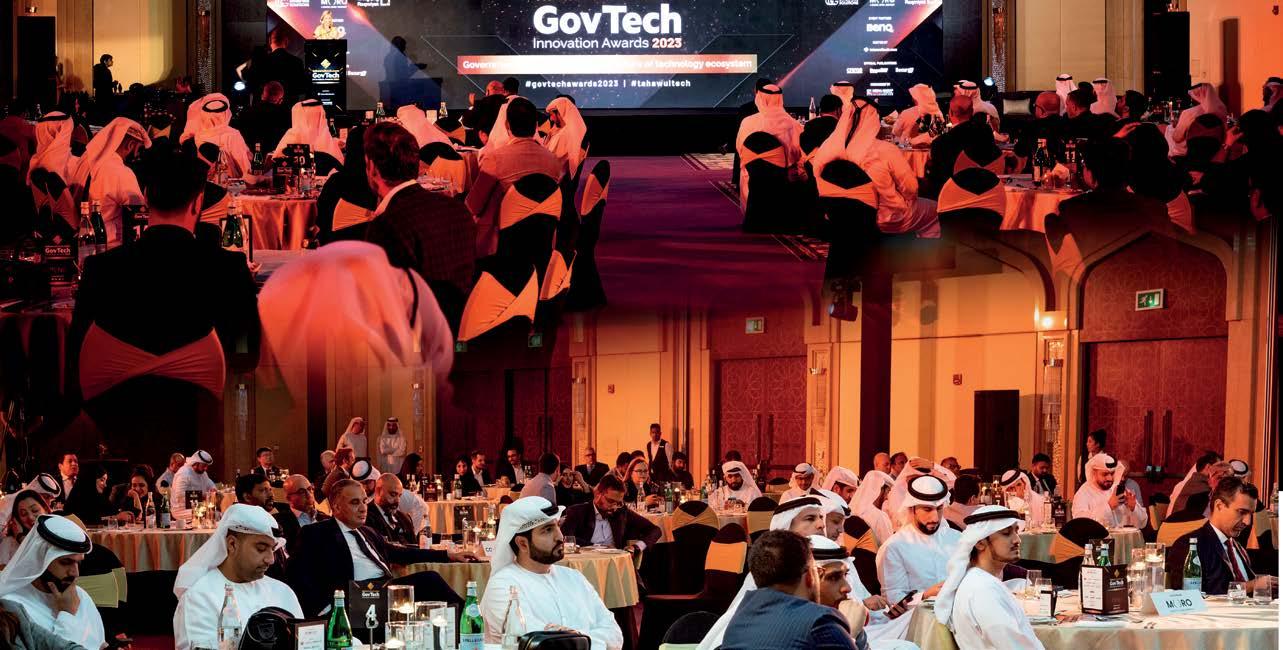

technology
#govtechawards2024 #tahawultech
Government IT Leaders predict the future of
ecosystem OFFICIAL PUBLICATIONS HOSTED BY



































































